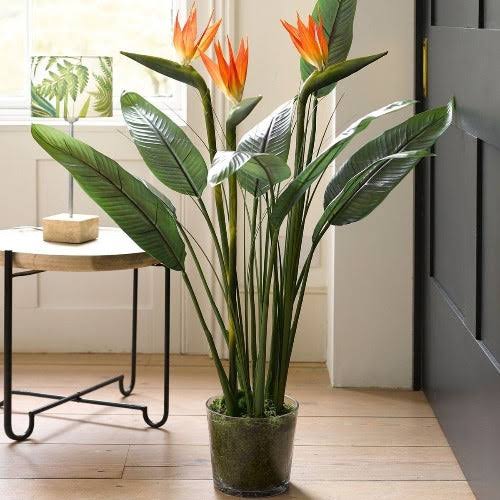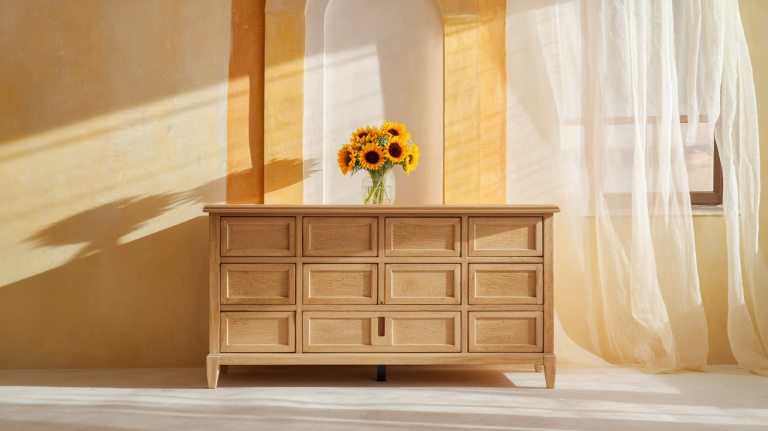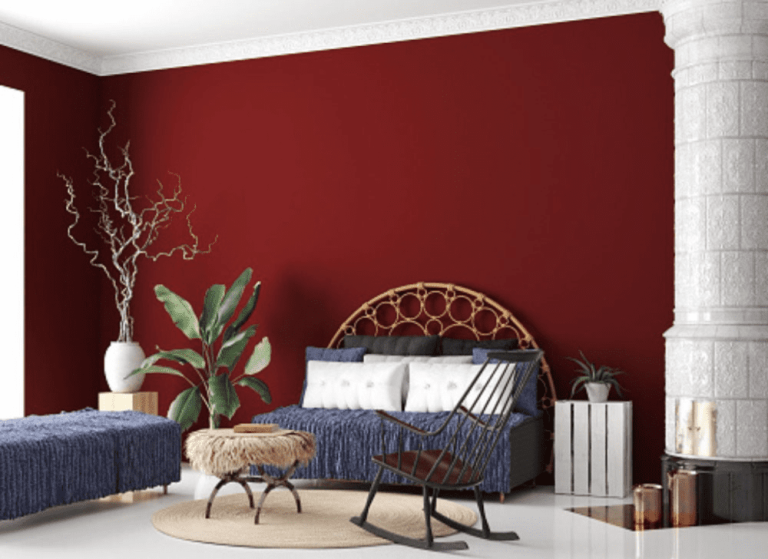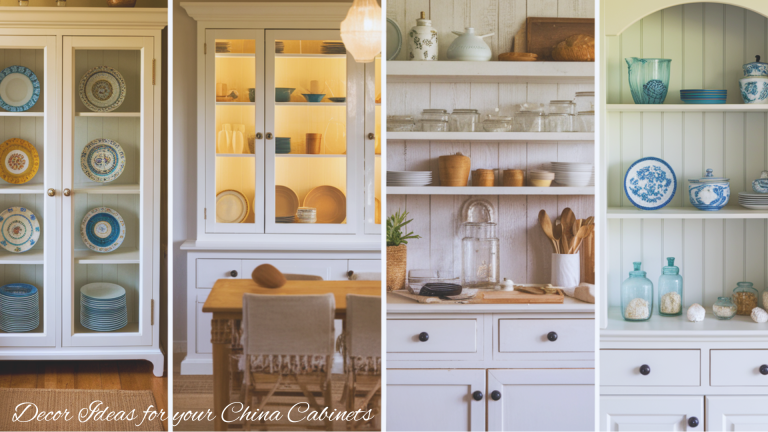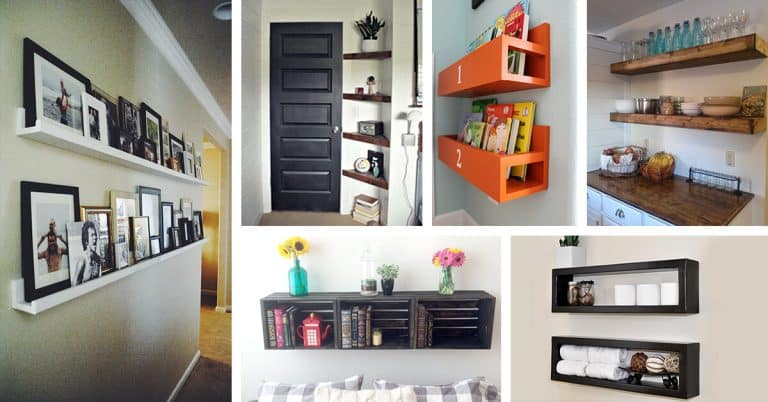31 Beautiful Flowers You Can Grow Easily
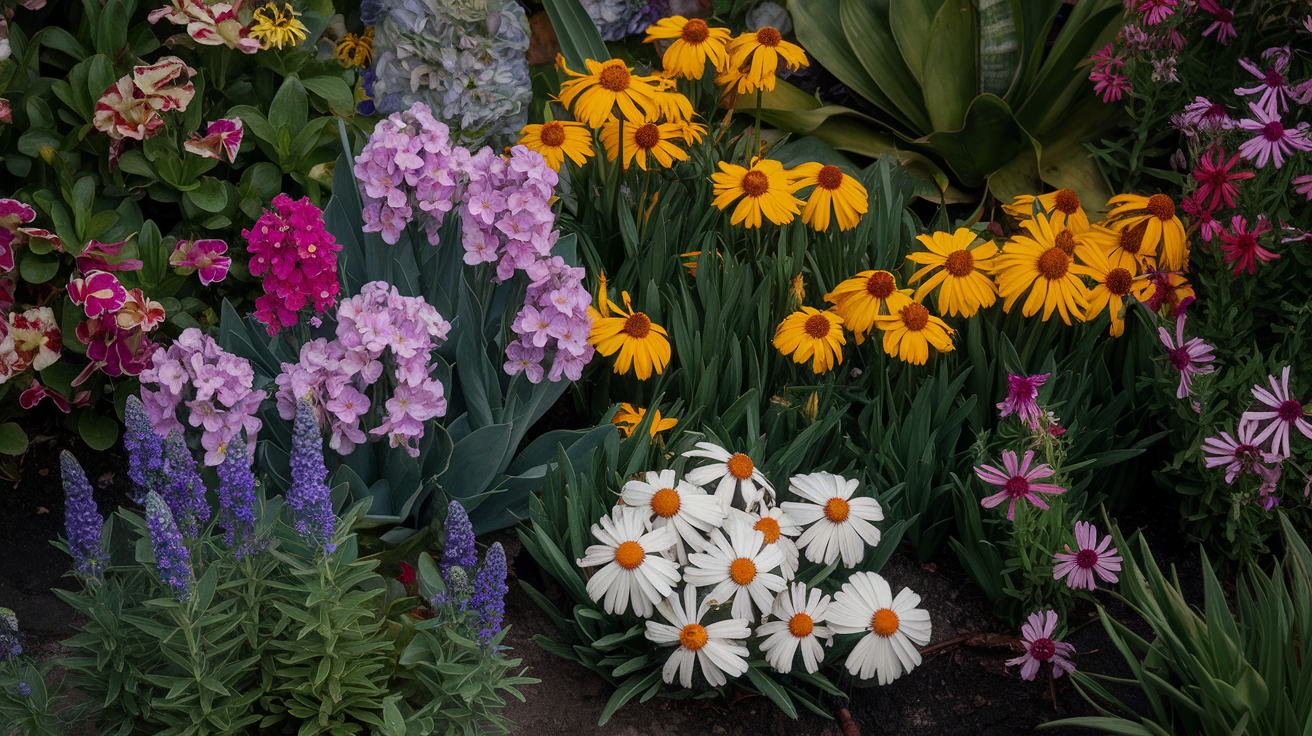
Are flowers nature’s way of showing us how to smile?
Growing your own flowers brings joy to your home and life in countless ways.
The splash of colors, the sweet scents, and the satisfaction of watching something flourish under your care make flower gardening one of life’s simple pleasures.
You don’t need fancy equipment or years of experience to grow beautiful blooms. Many flowers grow with basic care and minimal fuss.
This blog shares beautiful flowers that anyone can grow successfully.
From window boxes to sprawling gardens, these hardy plants will bring beauty to any space while forgiving the occasional missed watering or feeding.
List of Beautiful Flowers You Can Grow Easily
Let’s look at some flowers that won’t make you work too hard but will reward you with lots of color and beauty.
These plants forgive mistakes and don’t demand constant attention, making them perfect for both new and busy gardeners.
1. Marigolds
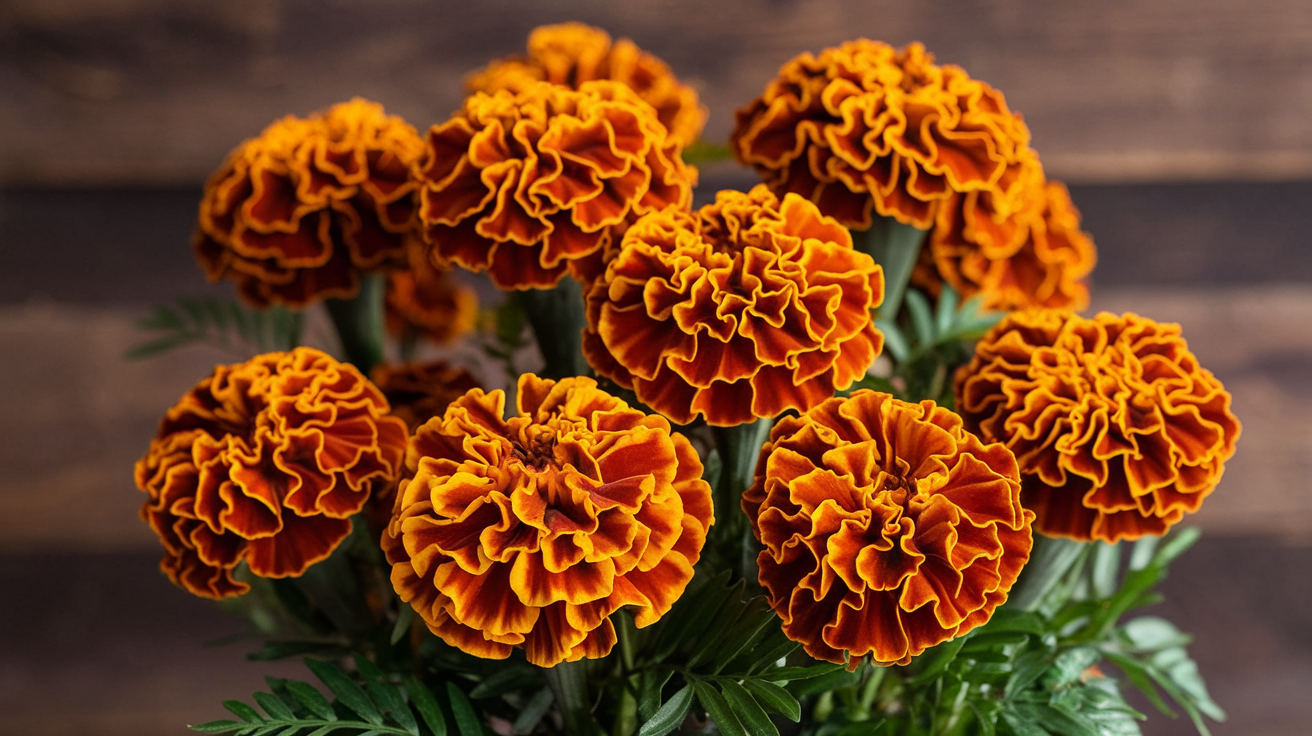
Marigolds bring bright pops of orange, yellow, and red to any garden space. These hardy plants handle heat well and keep blooming from spring until fall with minimal care.
Their strong scent helps keep pests away from other plants, so they work double-duty in vegetable gardens.
| Feature | Details |
|---|---|
| Common Colors | Orange, Yellow, Red |
| Height | 6-12 inches (some varieties up to 3 feet) |
| Sun Requirements | Full Sun |
| Watering Needs | Moderate, prefers well-drained soil |
| Blooming Season | Spring to Fall |
| Pest Control | Natural repellent for pests, great for vegetable gardens |
| Maintenance | Low-maintenance, deadheading flowers promote more blooms |
| Growth Rate | Fast-growing |
2. Zinnias
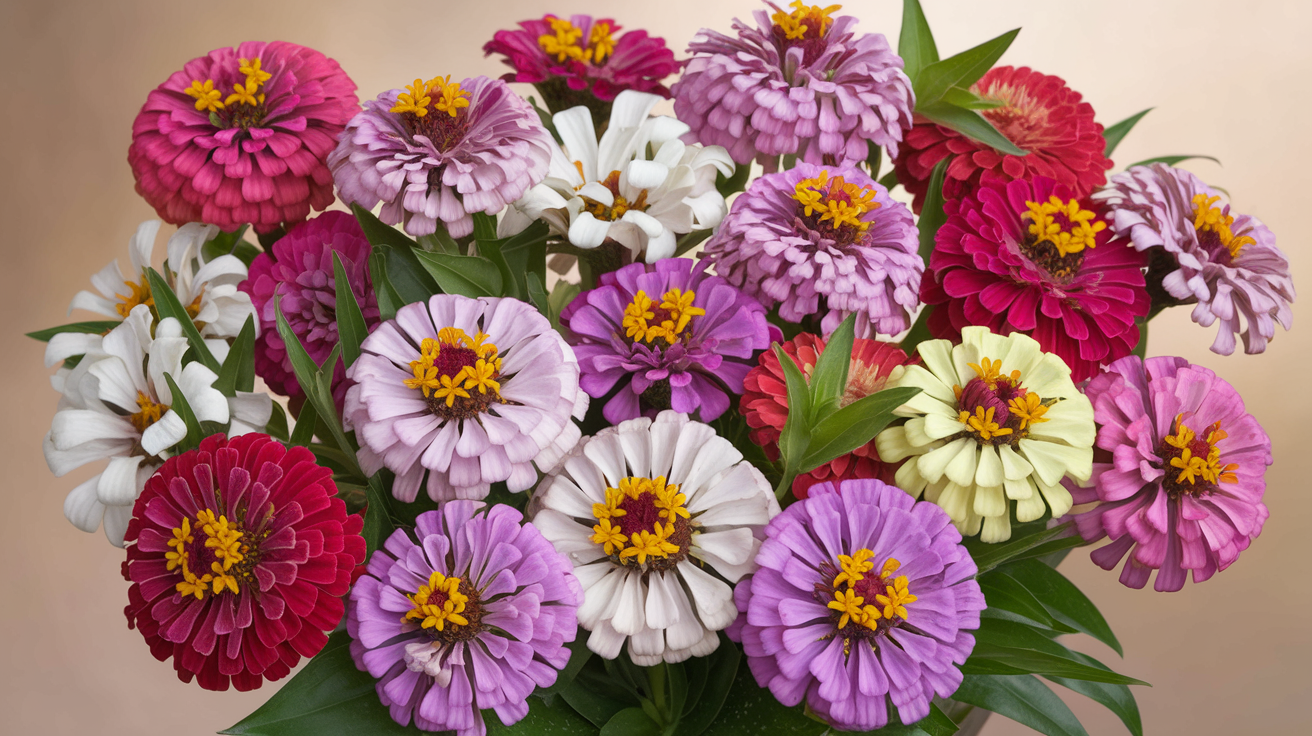
Zinnias offers some of the brightest, boldest colors you can find. These summer-loving flowers come in nearly every shade except blue, with styles ranging from single petals to fluffy pompoms.
They grow quickly from seeds planted directly in the ground after the last frost.
| Feature | Details |
|---|---|
| Common Colors | Nearly every color except blue (including bright, bold shades) |
| Petal Styles | Ranges from single petals to fluffy pompoms |
| Height | 1-3 feet |
| Sun Requirements | Full Sun |
| Watering Needs | Tolerates dry spells once established |
| Blooming Season | Summer |
| Pollinators | Attracts butterflies and bees |
| Planting Method | Directly from seeds after the last frost |
| Maintenance | Low-maintenance, regular cutting gives more blooms |
| Best Uses | Garden beds, borders, indoor bouquets |
3. Sunflowers
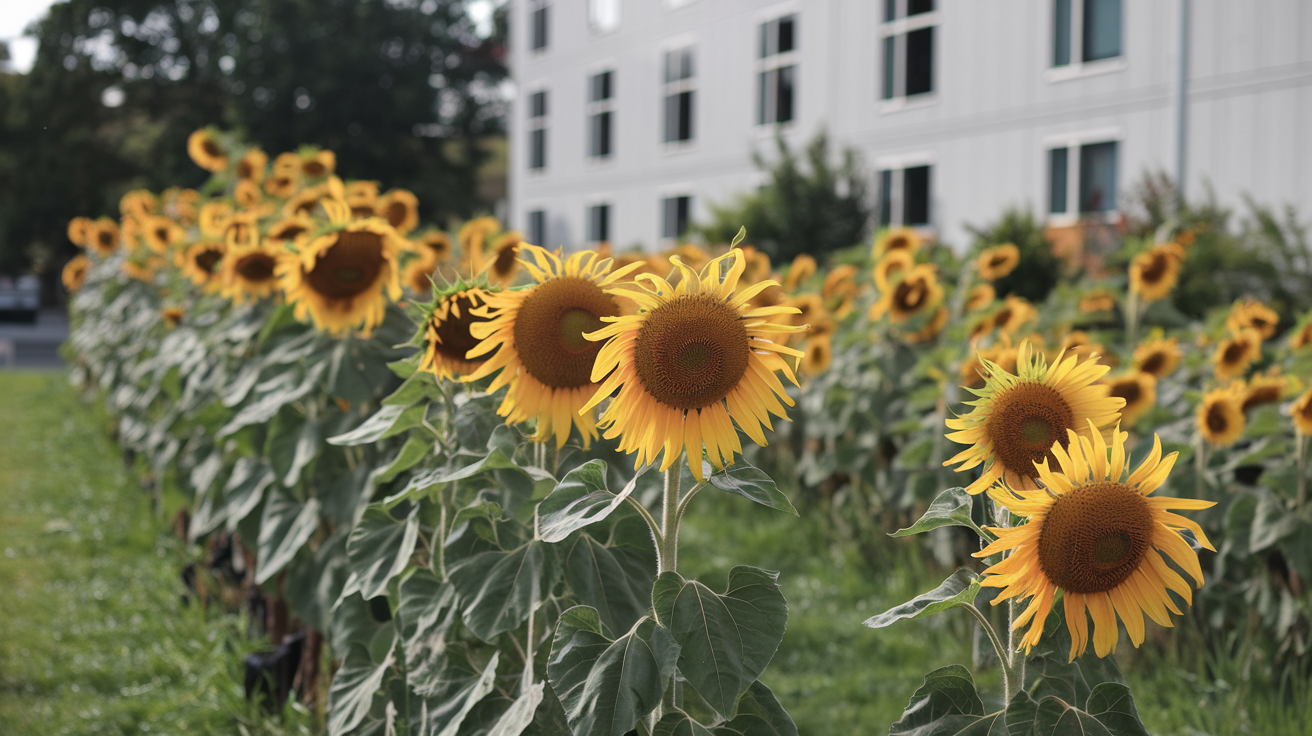
Sunflowers bring smiles with their cheerful yellow faces, tracking the sun across the sky.
These fast-growing plants can shoot up to impressive heights—from dwarf 2-foot varieties to giants reaching 12 feet or more.
| Feature | Details |
|---|---|
| Common Colors | Yellow, Rust, Burgundy, Creamy White |
| Height | Dwarf varieties (2 feet) to giants (12 feet or more) |
| Sun Requirements | Full Sun |
| Watering Needs | Needs water during dry spells |
| Blooming Season | Summer to Fall |
| Planting Method | Directly from seeds in the soil |
| Maintenance | Low-maintenance, occasional watering |
| Best Uses | Along fences, as a natural screen, to attract birds |
| Pollinators | Attracts birds and insects, especially bees |
4. Cosmos
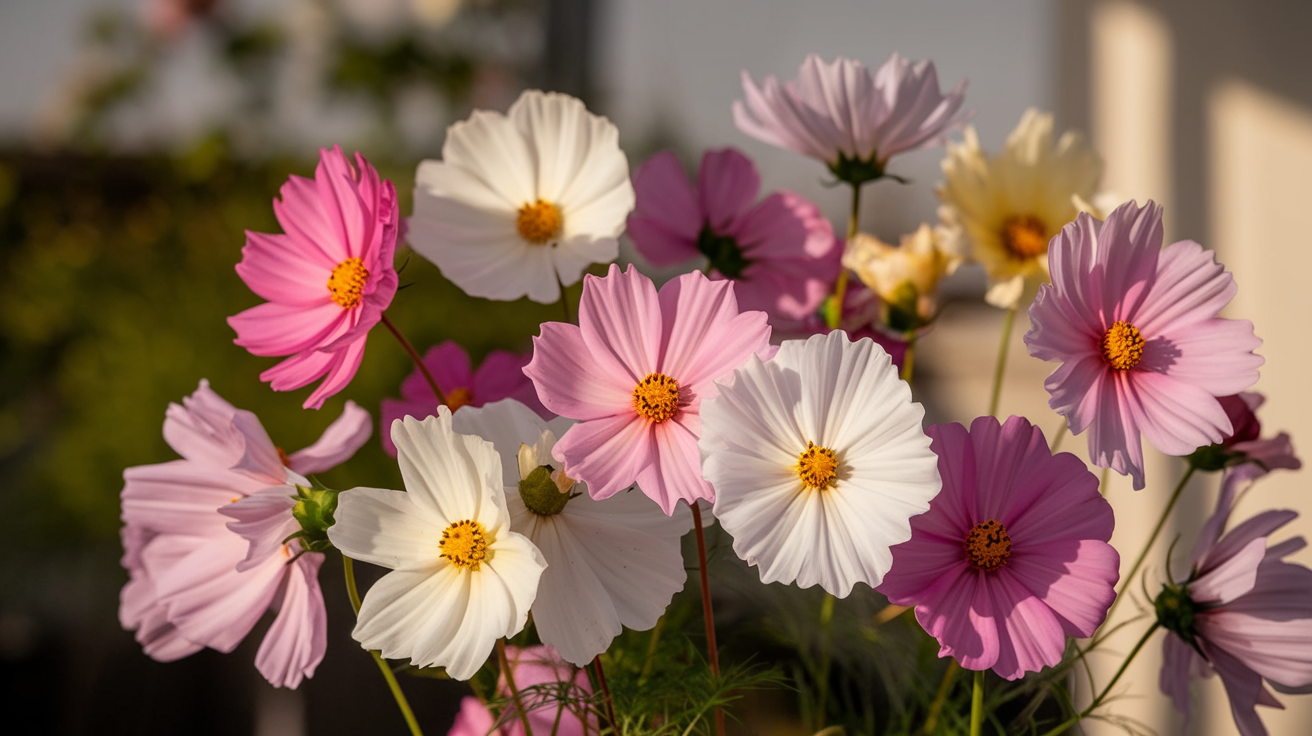
Cosmos features delicate, daisy-like flowers atop feathery foliage that sways gracefully in the breeze. These airy plants bloom in white, pink, red, and orange, bringing a wild, meadow-like feeling to any garden.
| Feature | Details |
|---|---|
| Common Colors | White, Pink, Red, Orange |
| Flower Type | Delicate, daisy-like blooms atop feathery foliage |
| Height | 2-4 feet |
| Sun Requirements | Full Sun |
| Soil Requirements | Grow in poor soil, prefers not to be overfed |
| Watering Needs | Occasional watering during very dry periods |
| Blooming Season | Summer to Fall |
| Pollinators | Attracts butterflies and beneficial insects |
| Maintenance | Low-maintenance, self-seeds readily |
| Best Uses | Filling spaces, creating a wild, meadow-like effect |
5. Petunias
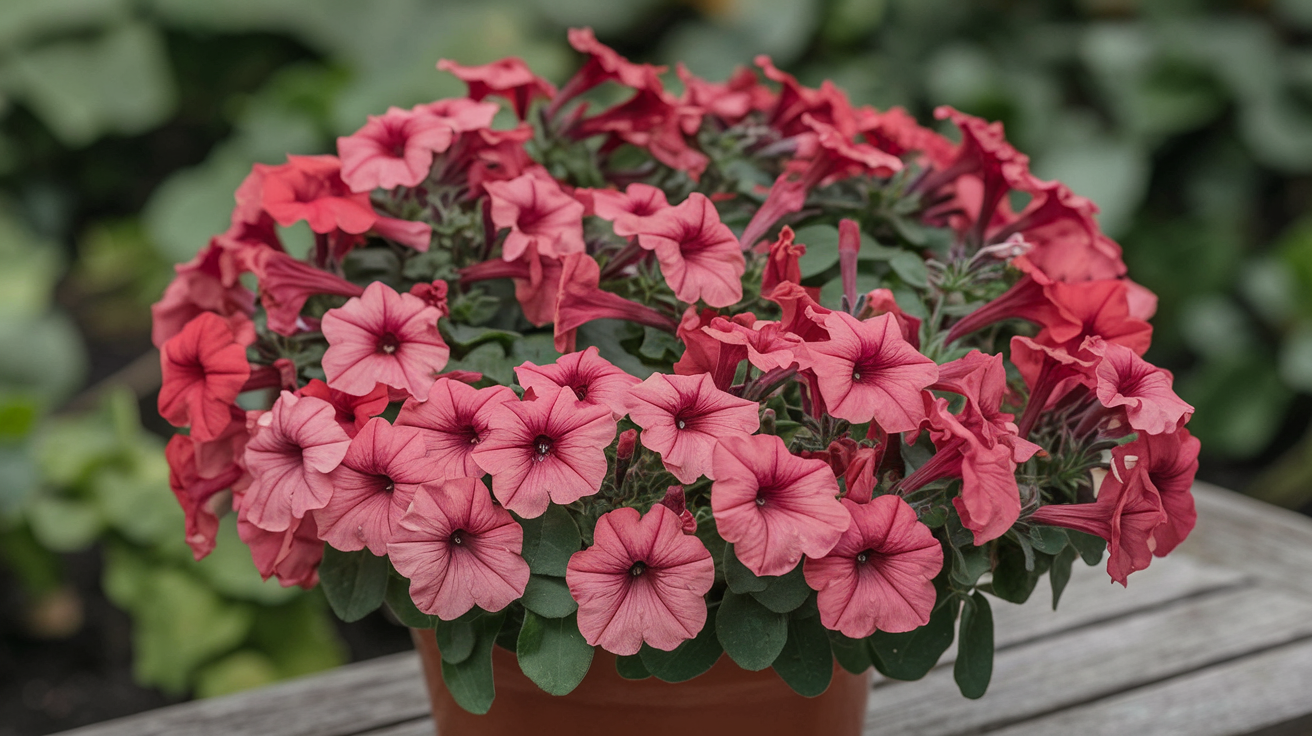
Petunias produce waves of trumpet-shaped blooms from spring until frost in a huge range of colors, patterns, and sizes.
Modern varieties stand up better to rain and heat than older types, making them even easier to grow.
| Feature | Details |
|---|---|
| Common Colors | Wide range of colors, patterns, and sizes |
| Flower Type | Trumpet-shaped blooms |
| Height/Spread | 12-24 inches, depending on variety |
| Sun Requirements | Full Sun |
| Watering Needs | Regular watering, but tolerant of occasional neglect |
| Blooming Season | Spring until Frost |
| Maintenance | Low-maintenance: remove spent blooms for more flowers |
| Best Uses | Hanging baskets, window boxes, garden borders |
| Fragrance | Some varieties have a pleasant fragrance, especially in the evening |
6. Lavender
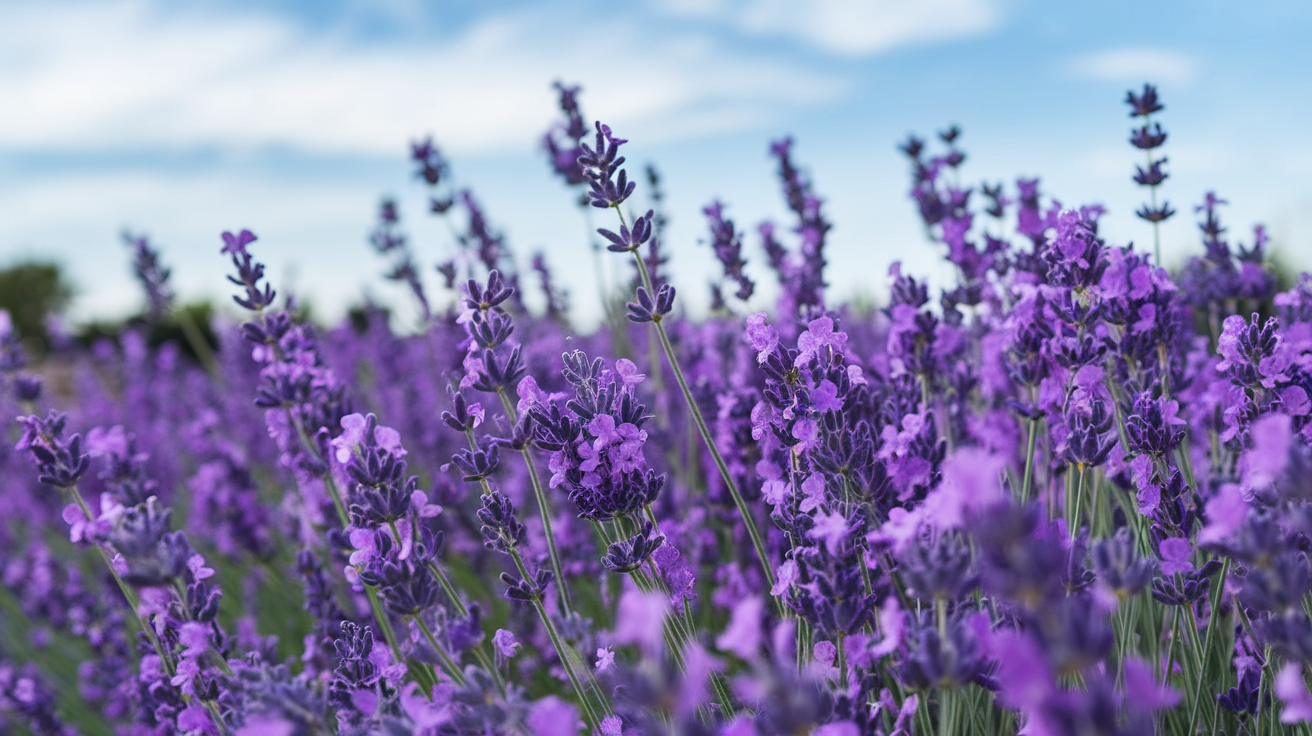
Lavender brings both beauty and fragrance to gardens with its purple-blue flower spikes and silver-green foliage.
This Mediterranean native loves sunny spots and well-drained soil, performing better when not fussed over too much.
| Feature | Details |
|---|---|
| Common Colors | Purple-Blue flower spikes |
| Foliage | Silver-green |
| Height | 1-3 feet, depending on variety |
| Sun Requirements | Full Sun |
| Soil Requirements | Well-drained soil performs better when not over-cared for |
| Watering Needs | Low once established, drought-tolerant |
| Blooming Season | Summer |
| Pollinators | Attracts helpful pollinators like bees and butterflies |
| Maintenance | Low-maintenance, minimal watering once established |
| Varieties | English (hardy, good for colder regions), French/Spanish (warm climates) |
7. Coneflowers (Echinacea)
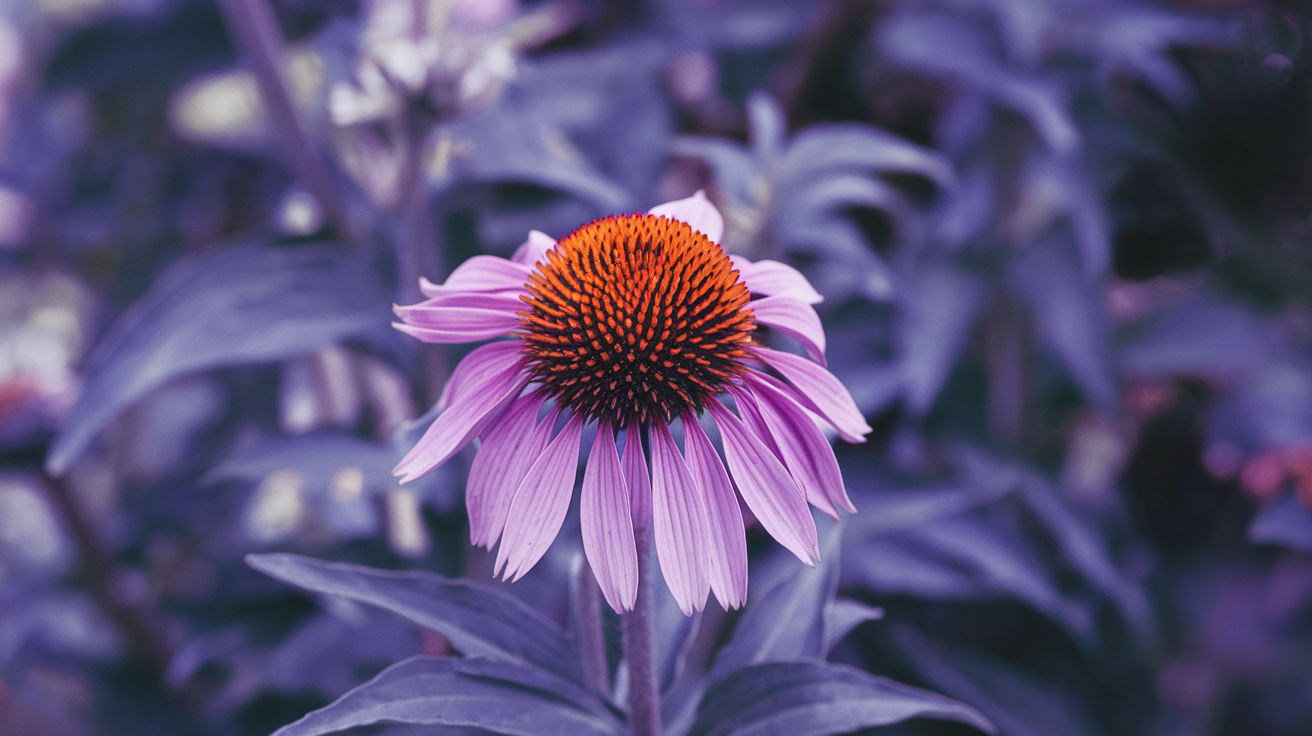
Coneflowers stand tall and strong through summer heat and drought, showing off their distinctive raised centers surrounded by colorful petals.
While purple is the traditional shade, newer varieties offer white, yellow, orange, red, and even green blooms.
| Feature | Details |
|---|---|
| Common Colors | Purple, White, Yellow, Orange, Red, Green |
| Flower Type | Raised centers surrounded by colorful petals |
| Height | 2-4 feet |
| Sun Requirements | Full Sun |
| Soil Requirements | Well-drained soil |
| Watering Needs | Drought-tolerant once established |
| Blooming Season | Summer to Fall |
| Maintenance | Low-maintenance removes dead flower heads promotes more blooms |
| Pollinators | Attracts bees, butterflies, and birds |
| Best Uses | Garden beds, cut flowers, supporting local wildlife |
| Hardiness | Tough perennial, returns year after year |
8. Black-Eyed Susans
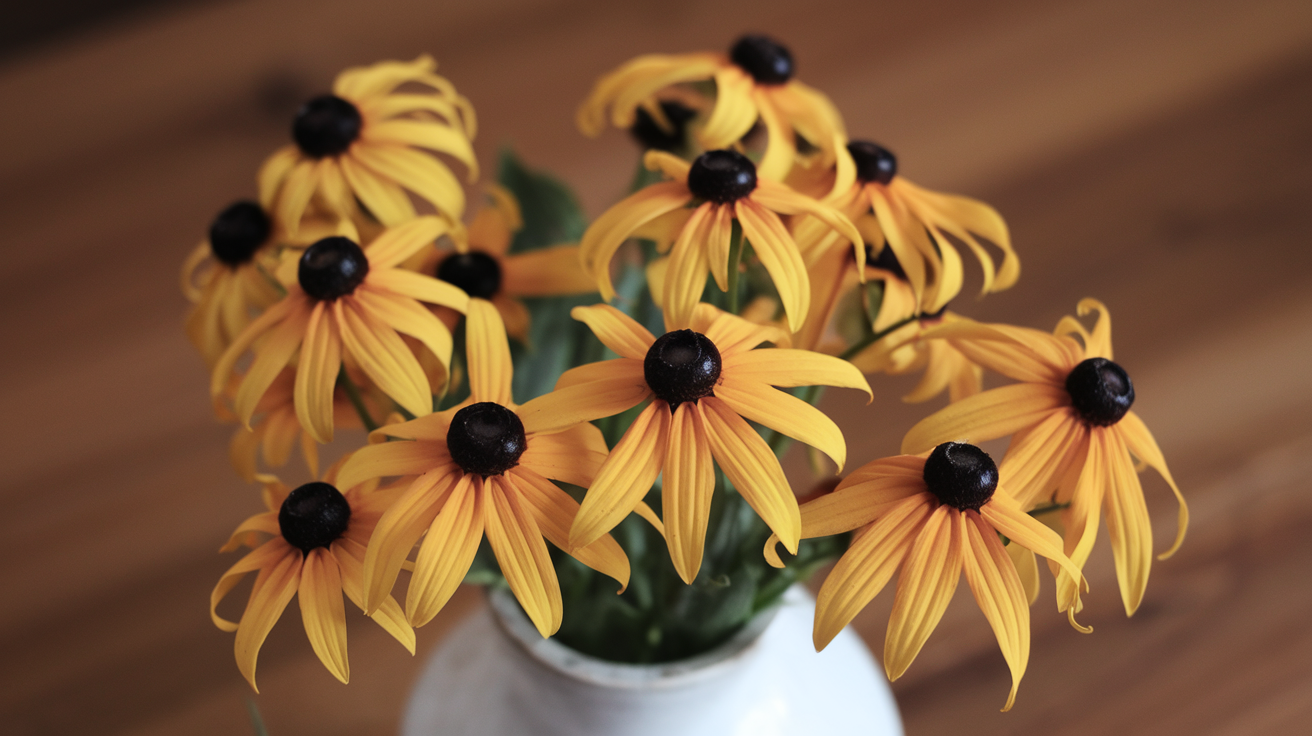
Black-Eyed Susans brighten gardens with their golden-yellow petals and dark brown centers from mid-summer through fall.
These cheerful natives spread readily but not aggressively, filling spaces with reliable color when many other flowers have faded.
| Feature | Details |
|---|---|
| Common Colors | Golden-yellow petals with dark brown centers |
| Height | About 2 feet |
| Sun Requirements | Full Sun (best blooming) but tolerate partial shade |
| Soil Requirements | Tolerates poor soil |
| Watering Needs | Drought-tolerant once established |
| Blooming Season | Mid-summer through Fall |
| Maintenance | Low-maintenance, divide every few years to maintain strength |
| Best Uses | Garden beds, casual bouquets, color pairings with purple flowers |
| Pollinators | Attracts bees and butterflies |
| Hardiness | Reliable perennial, blooms late in the season |
9. Daylilies
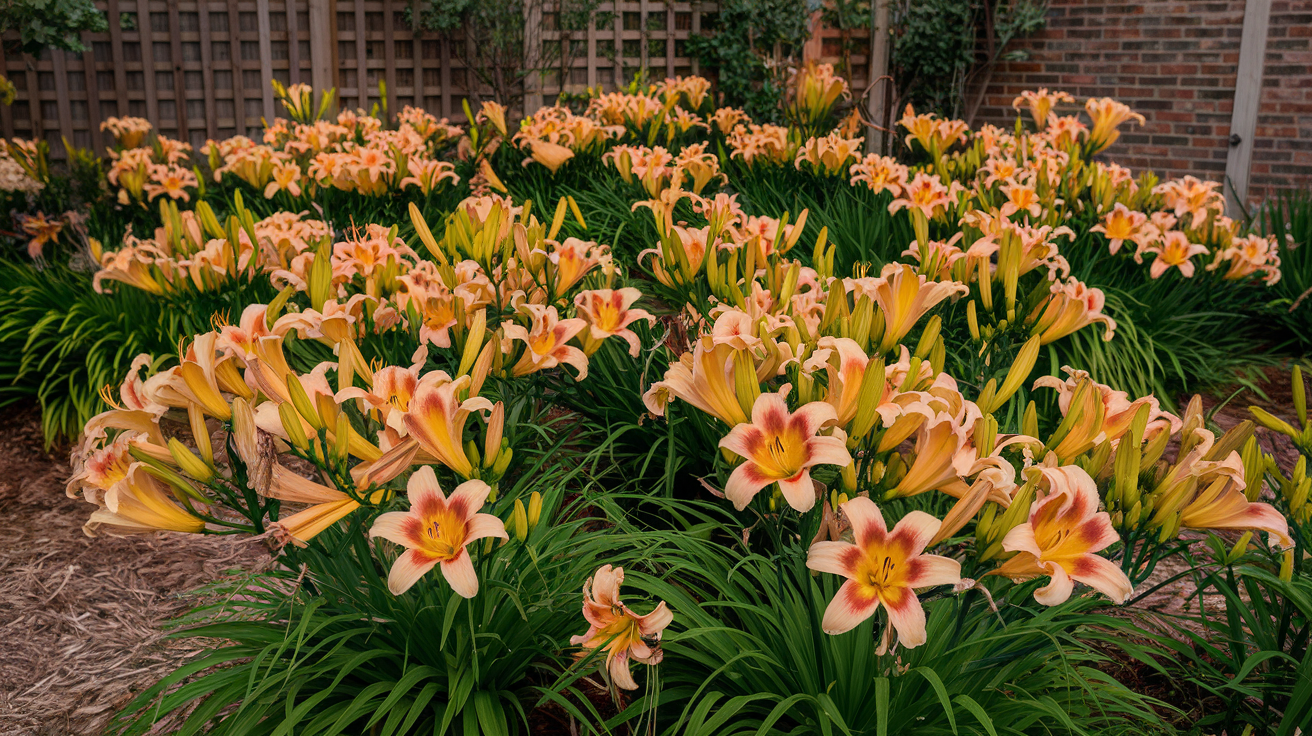
Daylilies earn their reputation as sturdy garden plants, growing in almost any condition, from full sun to partial shade.
Each flower lasts just one day—hence the name—but plants produce so many buds that the display continues for weeks.
| Feature | Details |
|---|---|
| Common Colors | Pale yellows, pinks, vibrant oranges, reds, purples, near-blacks |
| Flower Type | Each flower lasts one day, with many buds for continuous display |
| Height | 1-3 feet |
| Sun Requirements | Full Sun to Partial Shade |
| Soil Requirements | Tolerates poor soil |
| Watering Needs | Drought-tolerant once established |
| Blooming Season | Weeks-long display, blooms sporadically throughout the season |
| Maintenance | Low-maintenance, requires little care, even when neglected |
| Best Uses | Garden beds borders, are attractive even when not in bloom |
| Hardiness | Very hardy, grows in nearly any condition |
10. Peonies
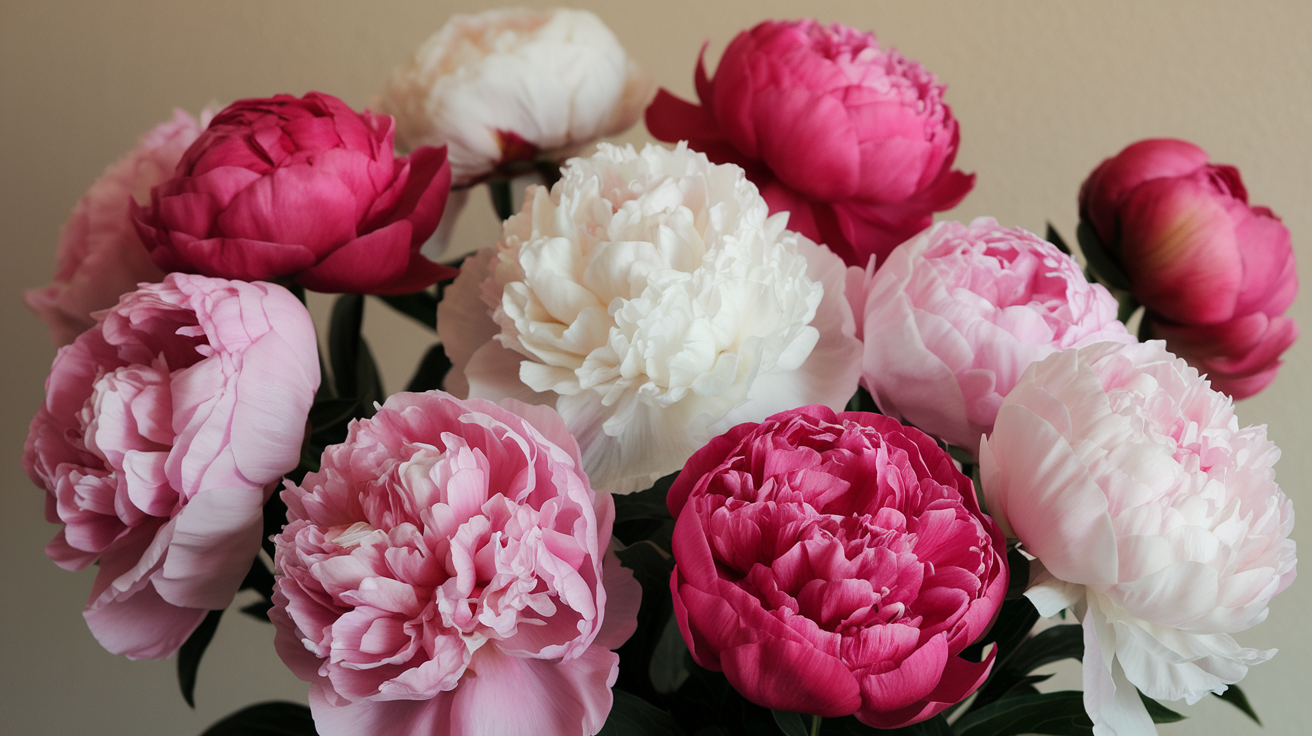
Peonies rank among the longest-lived garden plants, often outlasting the gardeners who plant them by decades.
These spring bloomers produce large, often fragrant flowers in shades of white, pink, coral, and deep red that can measure 6-8 inches across.
| Feature | Details |
|---|---|
| Common Colors | White, Pink, Coral, Deep Red |
| Flower Size | 6-8 inches across |
| Height | 2-3 feet tall and wide |
| Sun Requirements | Full Sun |
| Soil Requirements | Well-drained soil, proper planting depth (eyes 1-2 inches below the surface) |
| Watering Needs | Moderate, once established, requires little care |
| Blooming Season | Spring |
| Maintenance | Low-maintenance, remove spent flowers |
| Best Uses | Garden beds, borders, long-lasting beauty |
| Hardiness | Long-lived, can last decades with proper care |
11. Impatiens
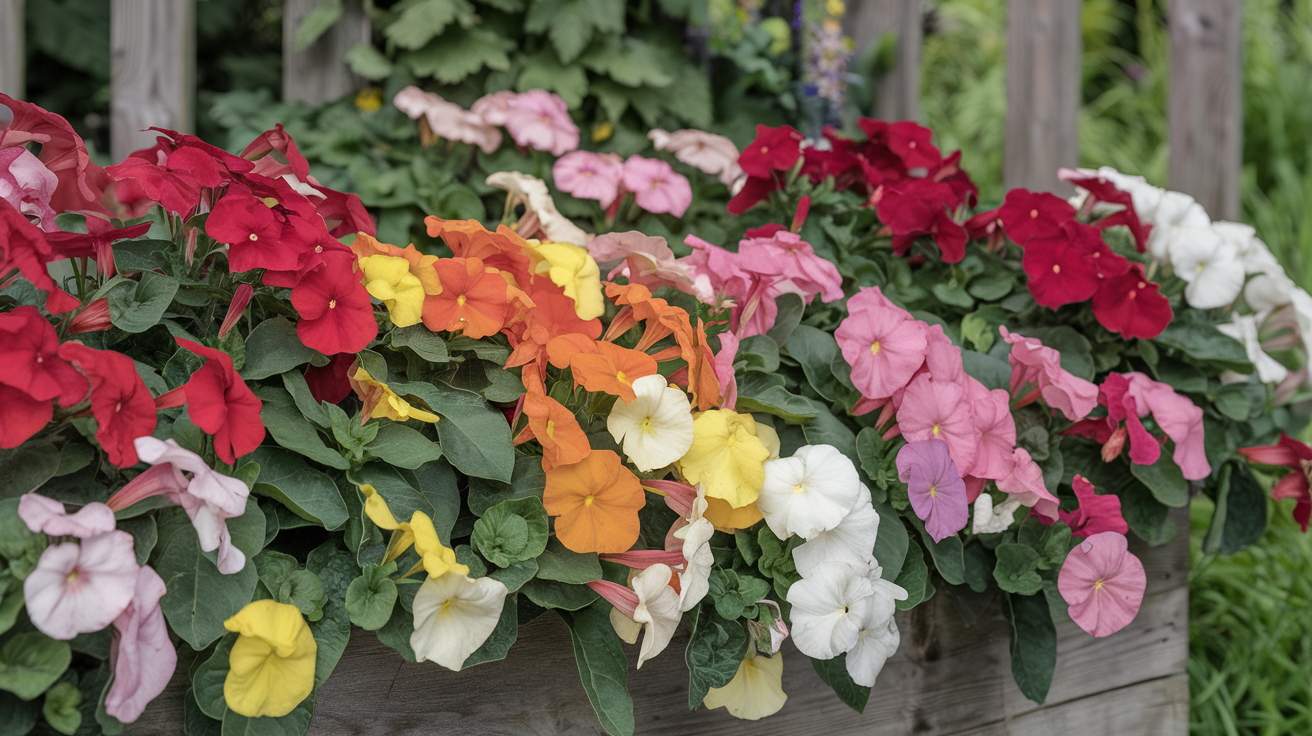
Impatiens bring splashes of color to shady garden spots where few other plants bloom well.
These low-growing plants (typically 6-24 inches tall) produce flowers in white, pink, red, orange, purple, and bicolor patterns throughout the growing season.
| Feature | Details |
|---|---|
| Common Colors | White, Pink, Red, Orange, Purple, Bicolor patterns |
| Height | 6-24 inches |
| Sun Requirements | Traditional: Shade; SunPatiens: Can handle direct sun |
| Watering Needs | Regular moisture prefers consistent watering |
| Blooming Season | Spring until Frost |
| Maintenance | Low-maintenance, regular watering for non-stop blooms |
| Best Uses | Containers, hanging baskets, ground cover under trees |
| Hardiness | SunPatiens are more resistant to common problems |
| Ideal Locations | Woodland gardens, north-facing spaces, shaded areas |
12. Begonias
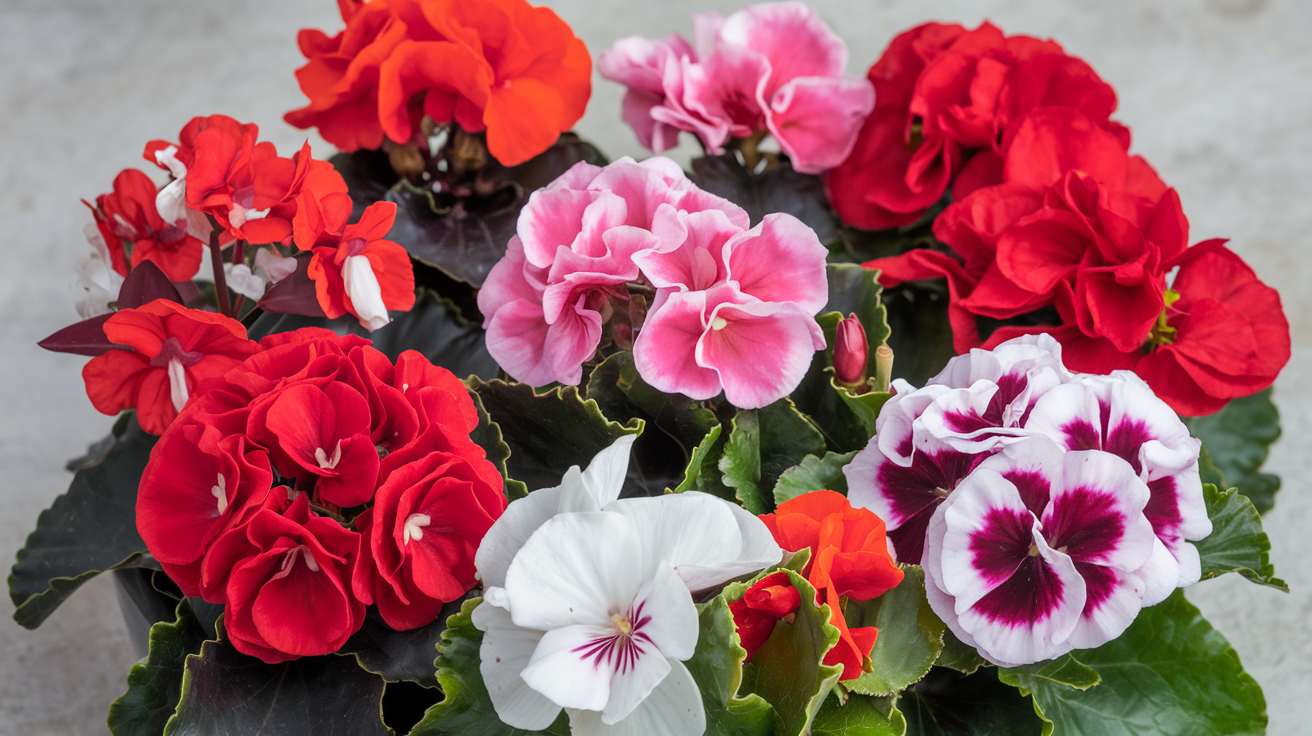
Begonias offer incredible variety in both flowers and foliage, working hard in gardens without demanding much attention.
| Feature | Details |
|---|---|
| Common Colors | Red, Pink, White, Rose-like blooms (Tuberous), Kaleidoscope-patterned leaves (Rex) |
| Height | 8-12 inches (Wax begonias), Larger blooms (Tuberous begonias) |
| Sun Requirements | Filtered sunlight or morning sun with afternoon shade |
| Watering Needs | Consistent moisture, avoid sogginess |
| Blooming Season | Spring through Fall |
| Maintenance | Low maintenance, requires regular watering |
| Types | Wax, Tuberous, Rex |
| Hardiness | Versatile, adapts well to container growing |
13. Hostas (for their flowers)
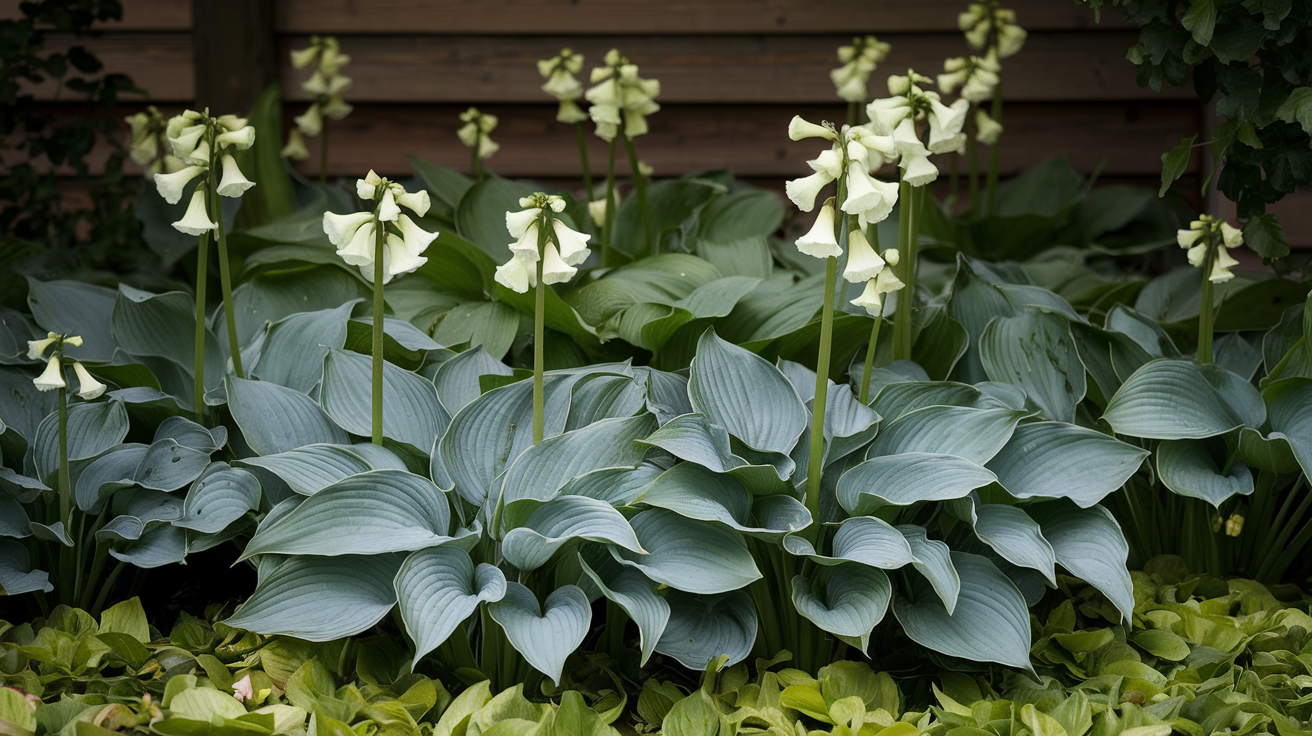
Hostas might be famous for their beautiful foliage, but their lily-like flowers deserve attention too.
Rising on tall stems above the leaves in summer, hosta blooms appear in white or lavender shades, often with a sweet fragrance that attracts hummingbirds.
| Feature | Details |
|---|---|
| Common Flower Colors | White, Lavender |
| Flower Type | Lily-like blooms with a sweet fragrance |
| Height | 4 inches to 4 feet, depending on the variety |
| Sun Requirements | Partial to Full Shade |
| Soil Requirements | Moist, rich soil |
| Watering Needs | Regular moisture, especially in shaded areas |
| Blooming Season | Summer |
| Maintenance | Low-maintenance, occasional division every 4-5 years |
| Pollinators | Attracts hummingbirds |
| Hardiness | Long-lived perennial, minimal care once established |
14. Astilbes
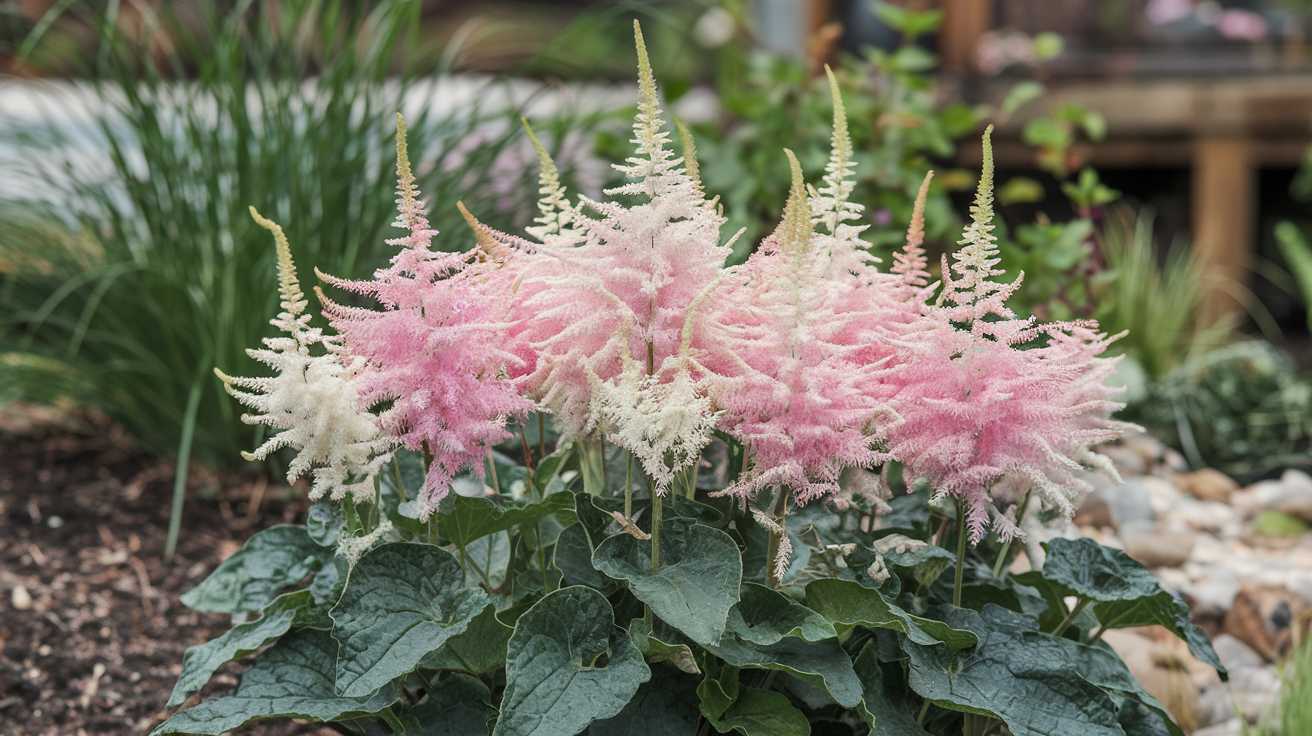
Astilbes produce feathery, plume-like flower spikes that add height and texture to garden spaces.
The fluffy blooms come in shades of white, pink, red, and purple, standing 1-3 feet tall, depending on the variety.
| Feature | Details |
|---|---|
| Common Colors | White, Pink, Red, Purple |
| Flower Type | Feathery, plume-like flower spikes |
| Height | 1-3 feet, depending on variety |
| Sun Requirements | Morning sun, afternoon shade (especially in warmer climates) |
| Soil Requirements | Moist, rich soil |
| Watering Needs | Regular watering |
| Blooming Season | Late Spring through Summer |
| Maintenance | Low-maintenance, spent blooms remain attractive into Fall |
| Foliage | Fern-like foliage turns bronze or gold in autumn |
| Pollinators | Attracts bees and butterflies |
15. Foxgloves
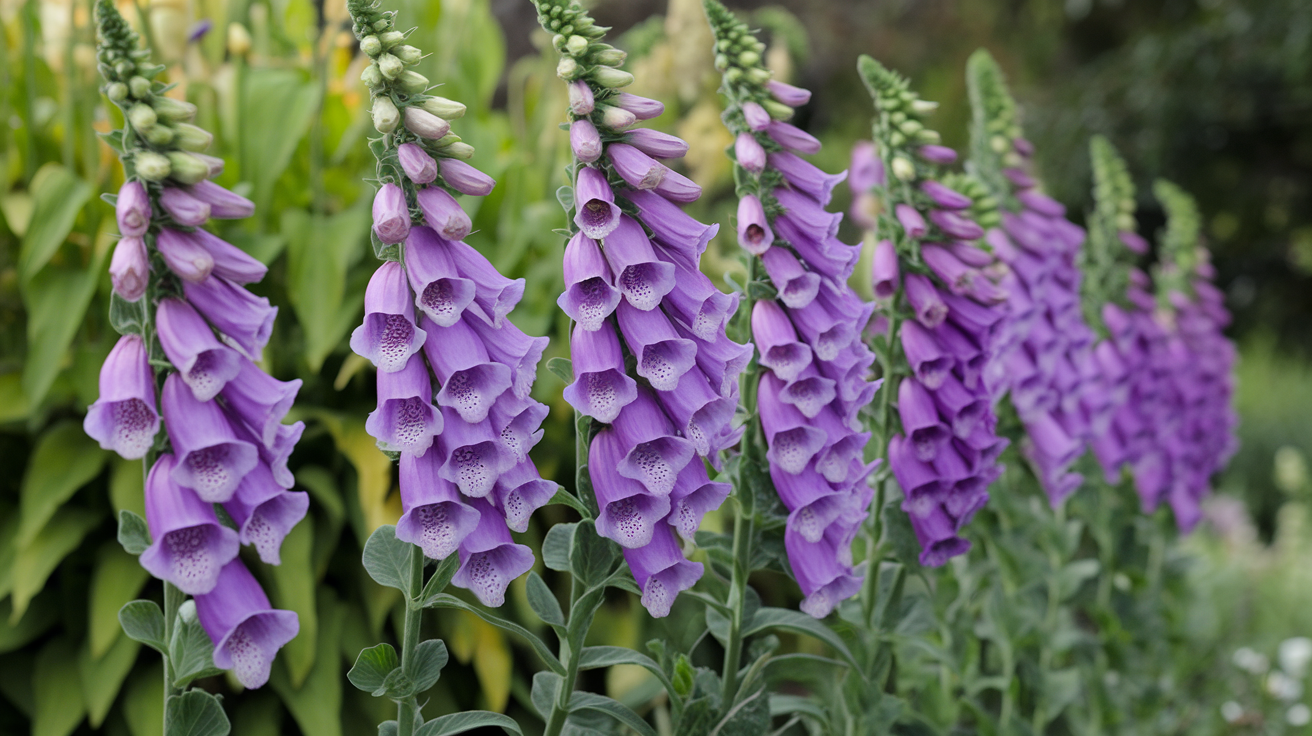
Foxgloves create vertical drama with their tall spires of tubular, speckled flowers that can reach 2-5 feet in height.
These charming plants produce white, cream, yellow, pink, or purple blooms, often with spotted throats that guide bees inside for pollination.
| Feature | Details |
|---|---|
| Common Colors | White, Cream, Yellow, Pink, Purple |
| Flower Type | Tall spires of tubular, speckled flowers |
| Height | 2-5 feet |
| Sun Requirements | Partial Shade |
| Soil Requirements | Moist soil |
| Watering Needs | Regular moisture |
| Blooming Season | Summer |
| Maintenance | Self-seeds readily, low-maintenance once established |
| Pollinators | Attracts bees for pollination |
| Toxicity | All parts of the plant are toxic if eaten |
16. Geraniums
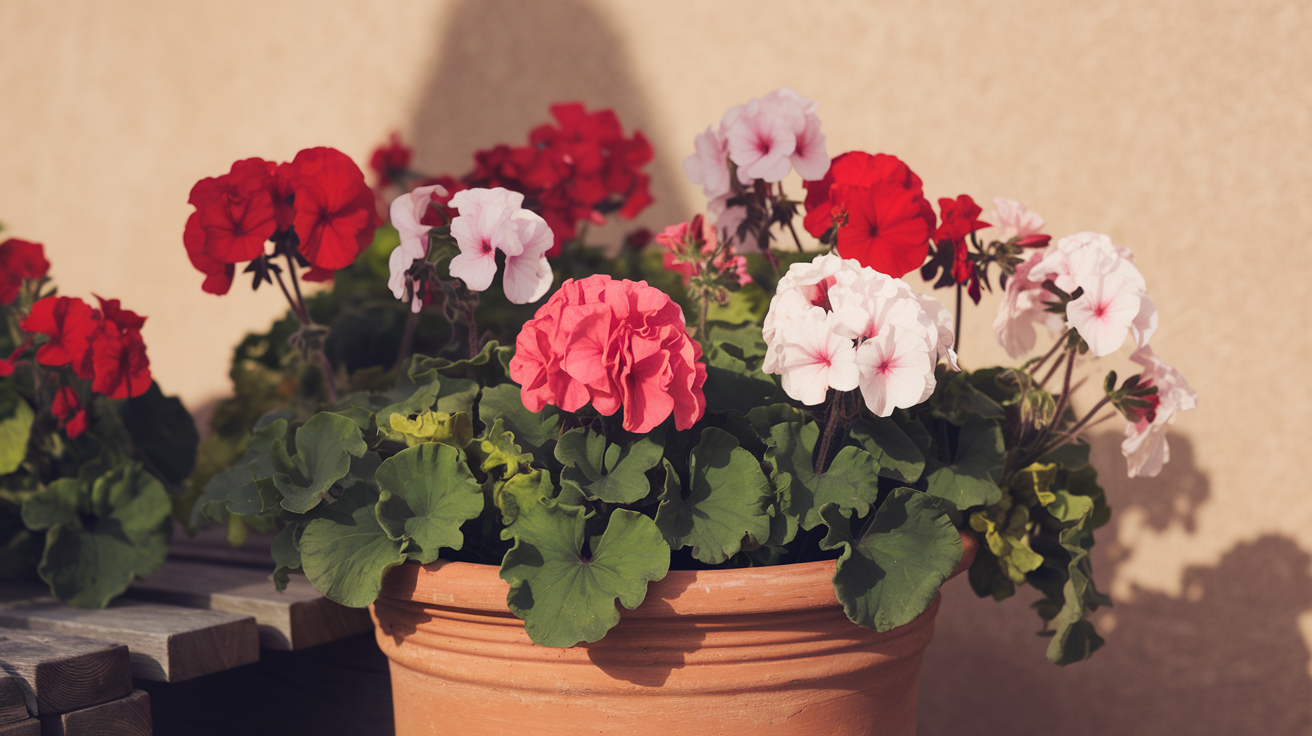
Geraniums offer reliable color throughout the growing season with minimal fuss.
These popular plants come in white, pink, salmon, red, and even lavender-blue shades, often with interesting leaf patterns or scents.
| Feature | Details |
|---|---|
| Common Colors | White, Pink, Salmon, Red, Lavender-blue |
| Flower Type | Reliable, colorful blooms with interesting leaf patterns or scents |
| Height | 12-18 inches |
| Sun Requirements | At least 6-8 hours of sunlight |
| Watering Needs | Moderate watering, allow soil to dry slightly between drinks |
| Blooming Season | Throughout the growing season |
| Maintenance | Low-maintenance: remove dead flowers to encourage new blooms |
| Best Conditions | Slightly pot-bound, not overfed |
| Propagation | Easily propagated by rooting stems in water |
| Hardiness | Bloom better when not overfed |
17. Dahlias
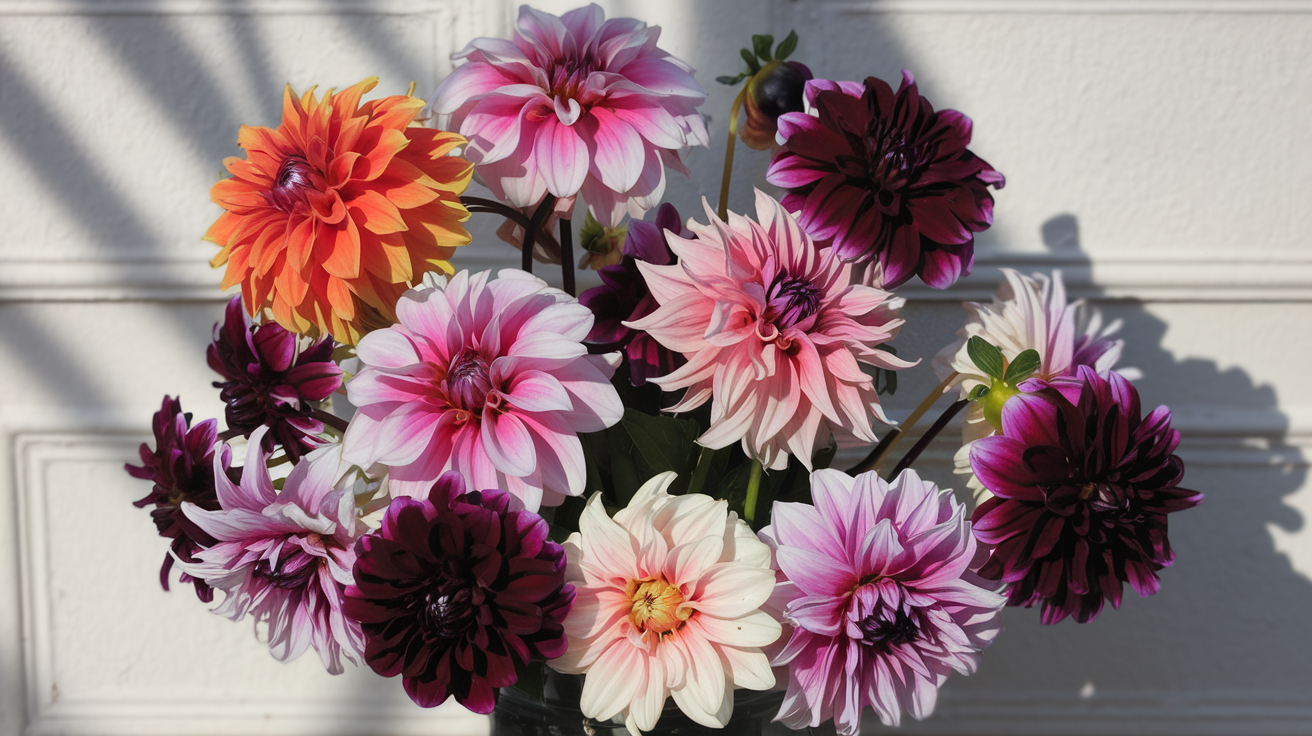
Dahlias dazzle with their perfect geometric blooms in a rainbow of colors and forms.
These summer stars range from tiny 2-inch pom-poms to dinner-plate-sized flowers reaching 10-12 inches across.
| Feature | Details |
|---|---|
| Common Colors | Virtually every color except true blue |
| Flower Type | Geometric blooms range from 2-inch pom-poms to 10-12 inches |
| Height | 1-6 feet, depending on variety |
| Sun Requirements | Full sun |
| Watering Needs | Moderate watering |
| Soil Requirements | Well-drained soil |
| Blooming Season | Summer |
| Maintenance | Regular feeding, remove spent blooms for more flowers |
| Propagation | Grown from tubers, require winter protection in colder areas |
| Hardiness | Need winter protection in cold climates, easy care during growing season |
| Best Practices | Stake taller varieties early, plant after frost danger has passed |
18. Salvia
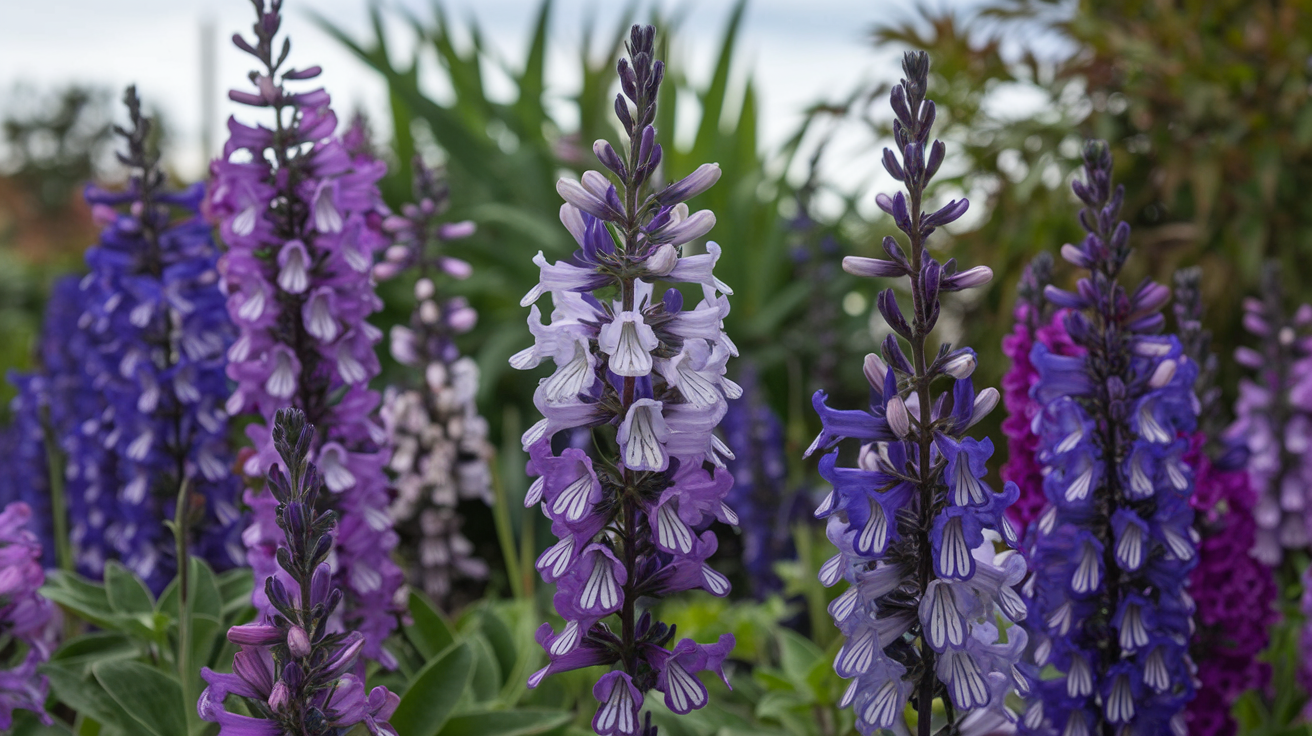
Salvia offers long-lasting color with almost zero maintenance, coming in blues, purples, reds, and pinks that attract butterflies and hummingbirds.
These sun-loving plants have aromatic foliage that deer and rabbits typically avoid.
| Feature | Details |
|---|---|
| Common Colors | Blue, Purple, Red, Pink |
| Flower Type | Long-lasting color attracts butterflies and hummingbirds |
| Height | 18-36 inches |
| Sun Requirements | Full Sun |
| Watering Needs | Minimal watering once established |
| Soil Requirements | Grow in average soil |
| Blooming Season | Summer to Fall |
| Maintenance | Low-maintenance: trim dead flowers by one-third for continuous blooms |
| Types | Perennial (May Night, Hot Lips), Annual (Vista Red) |
| Hardiness | Perennial varieties return year after year |
| Pollinators | Attracts butterflies and hummingbirds |
| Pests | Deer and rabbits typically avoid due to aromatic foliage |
19. Coreopsis
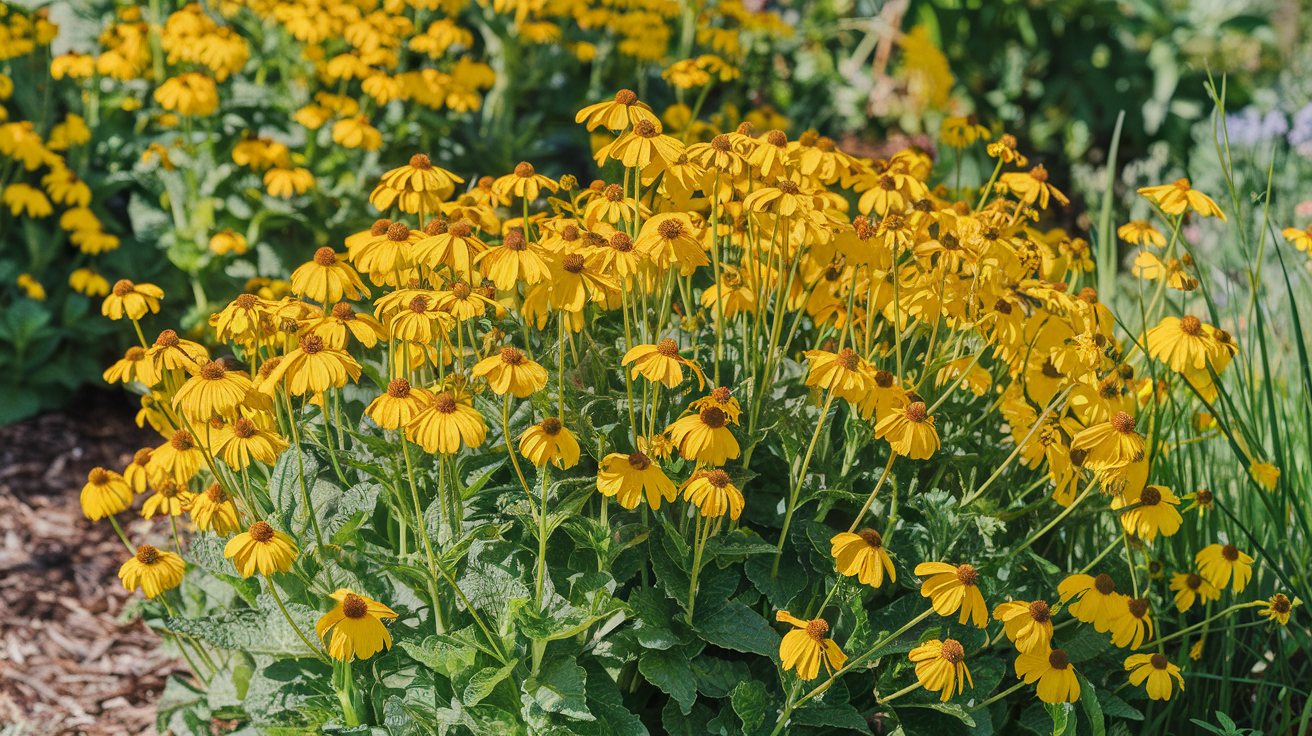
Coreopsis brings sunshine to gardens with its bright, daisy-like flowers in gold, yellow, orange, pink, and red shades.
These North American natives bloom abundantly from early summer until frost if deadheaded occasionally.
| Feature | Details |
|---|---|
| Common Colors | Gold, Yellow, Orange, Pink, Red |
| Flower Type | Bright, daisy-like blooms |
| Height | 6-24 inches (depending on variety) |
| Sun Requirements | Full sun |
| Soil Requirements | Well-drained soil |
| Watering Needs | Minimal once established |
| Blooming Season | Early summer to frost |
| Maintenance | Deadhead occasionally for continued blooming |
| Hardiness | Tolerates heat, humidity, and poor soil |
| Pollinators | Attracts bees and butterflies |
20. Blanket Flowers (Gaillardia)
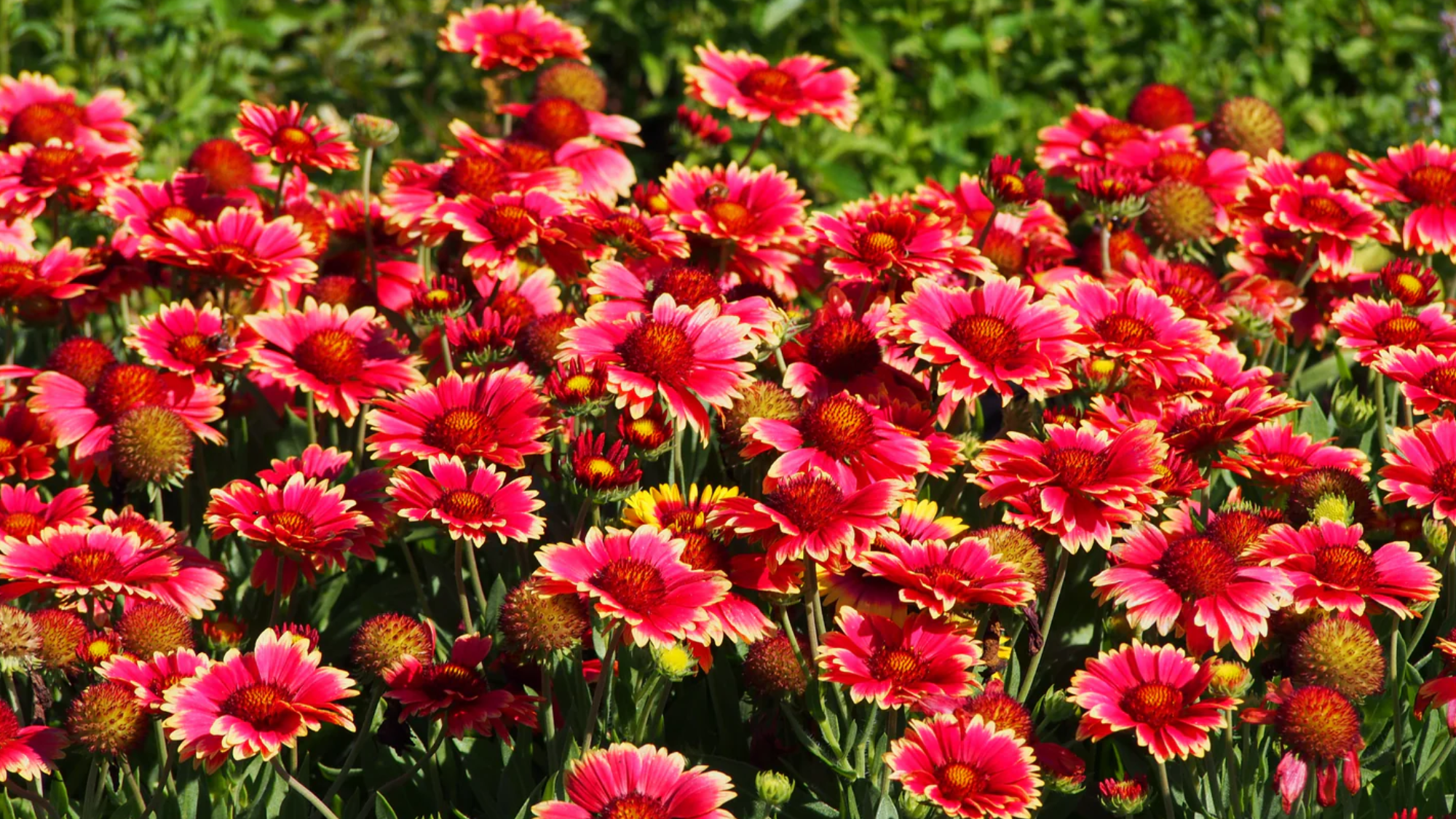
Blanket flowers earn their place in any easy-care garden with months of bold, bright blooms in fiery red, orange, and yellow combinations.
These tough plants laugh at summer heat, poor soil, and dry conditions while producing masses of 2-3 inch flowers from early summer until frost.
| Feature | Details |
|---|---|
| Common Colors | Fiery red, orange, and yellow combinations |
| Flower Type | Daisy-like blooms with banded patterns |
| Height | 12-24 inches |
| Sun Requirements | Full sun |
| Soil Requirements | Well-drained soil |
| Watering Needs | Tolerates dry conditions, minimal watering |
| Blooming Season | Early summer to frost |
| Maintenance | Low-maintenance, deadheading extends bloom season but isn’t necessary |
| Pollinators | Attracts butterflies |
| Cut Flower Quality | Excellent for cut flowers |
21. Pansies
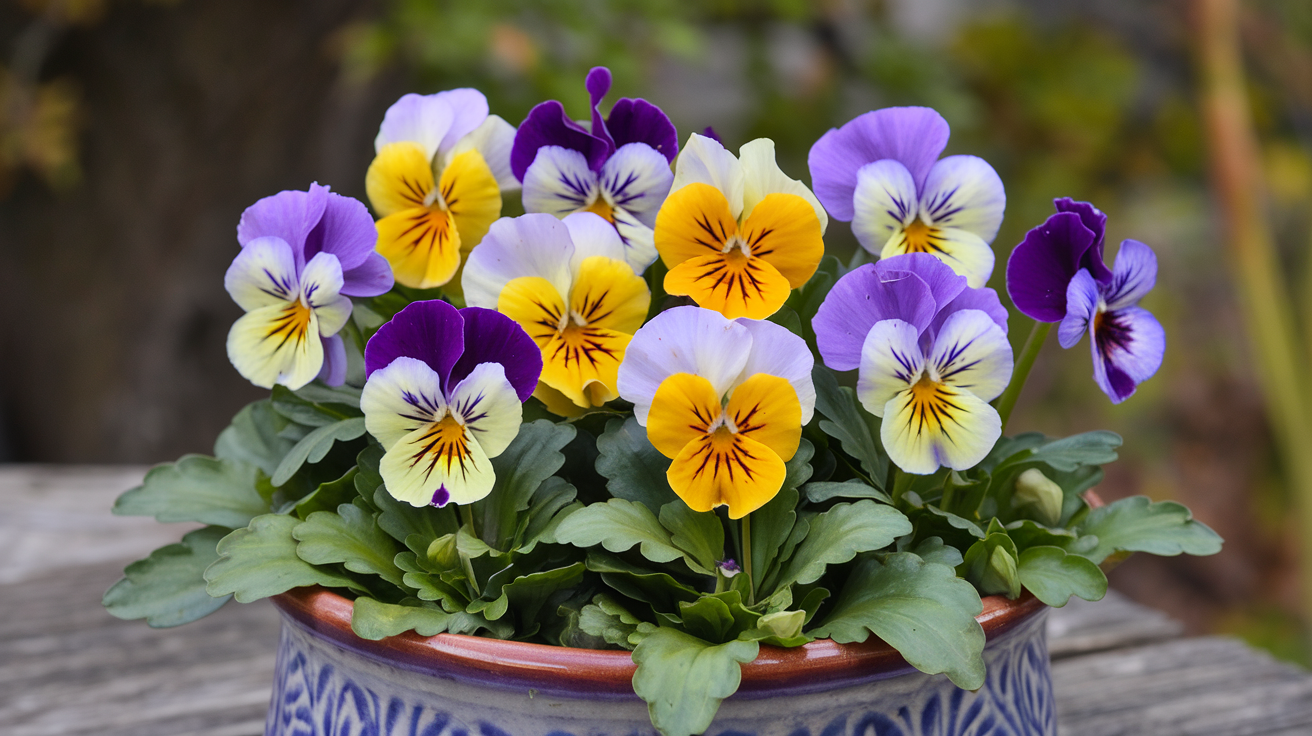
Pansies are some of the most user-friendly flowers for new and skilled gardeners. These small but tough plants show off their “faces” in almost every color you can think of.
You’ll find them in purples, yellows, blues, reds, whites, and many mixed colors too.
| Feature | Details |
|---|---|
| Flower Colors | Purple, yellow, blue, red, white, and mixed colors |
| Best Growing Seasons | Early spring, fall |
| Weather Preference | Cooler weather |
| Sunlight Needs | Partial sun, afternoon shade in warmer areas |
| Height | 6-9 inches |
| Spread | 6-9 inches |
| Basic Care | Water when the soil feels dry; remove old blooms for continuous growth |
22. Nasturtiums
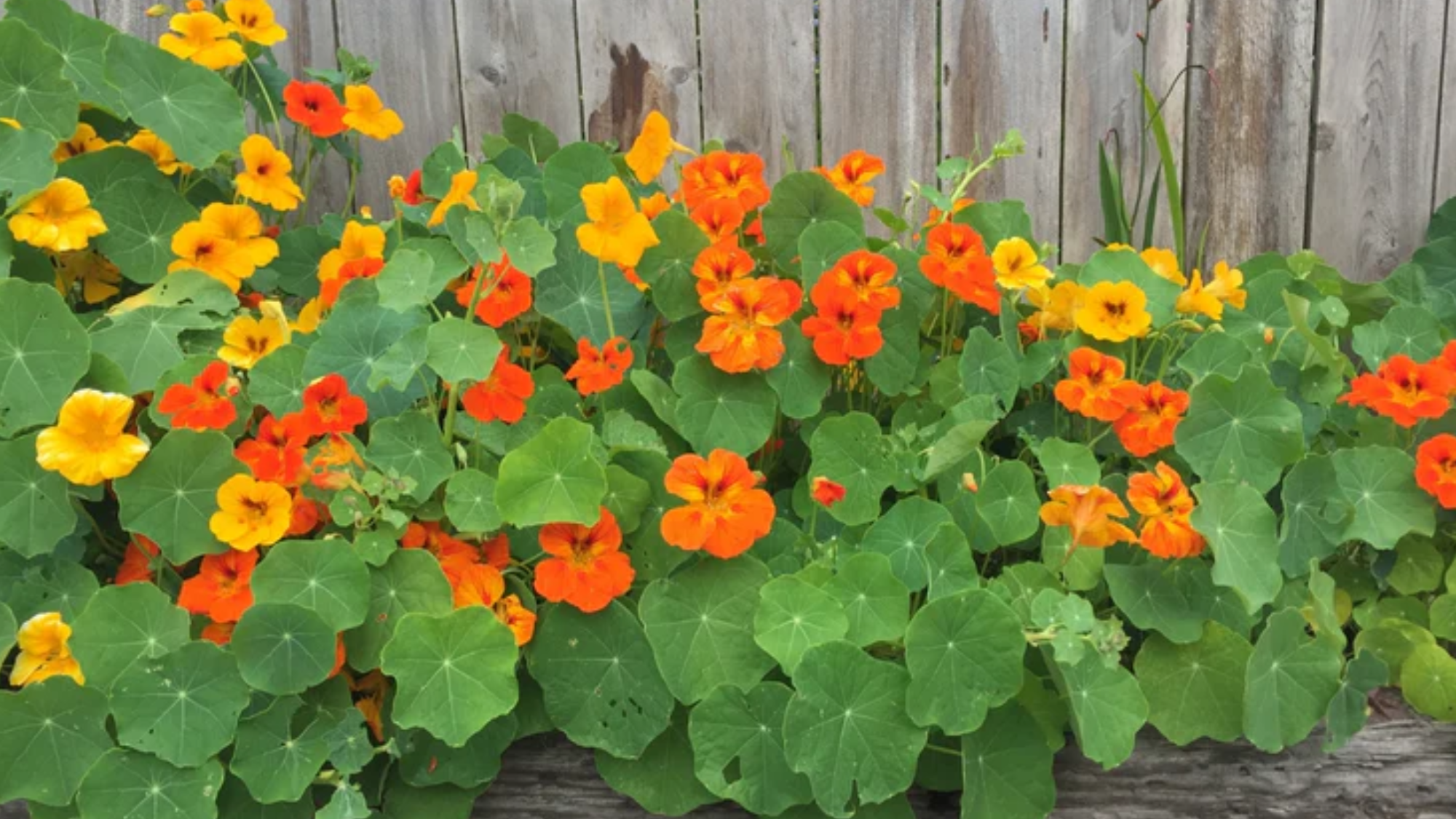
Nasturtiums offer both good looks and good taste! These bright flowers come in warm shades of red, orange, and yellow.
The round leaves have a nice blue-green color that makes the flowers stand out even more.
| Feature | Details |
|---|---|
| Flower Colors | Red, orange, yellow |
| Leaf Color | Blue-green |
| Best Growing Method | Directly from seeds after the last frost |
| Soil Preference | Poor soil (too much fertilizer reduces flowers) |
| Edible Parts | Flowers and leaves (peppery taste) |
| Basic Care | Watering as needed, no extra care required |
23. Calibrachoa (Million Bells)
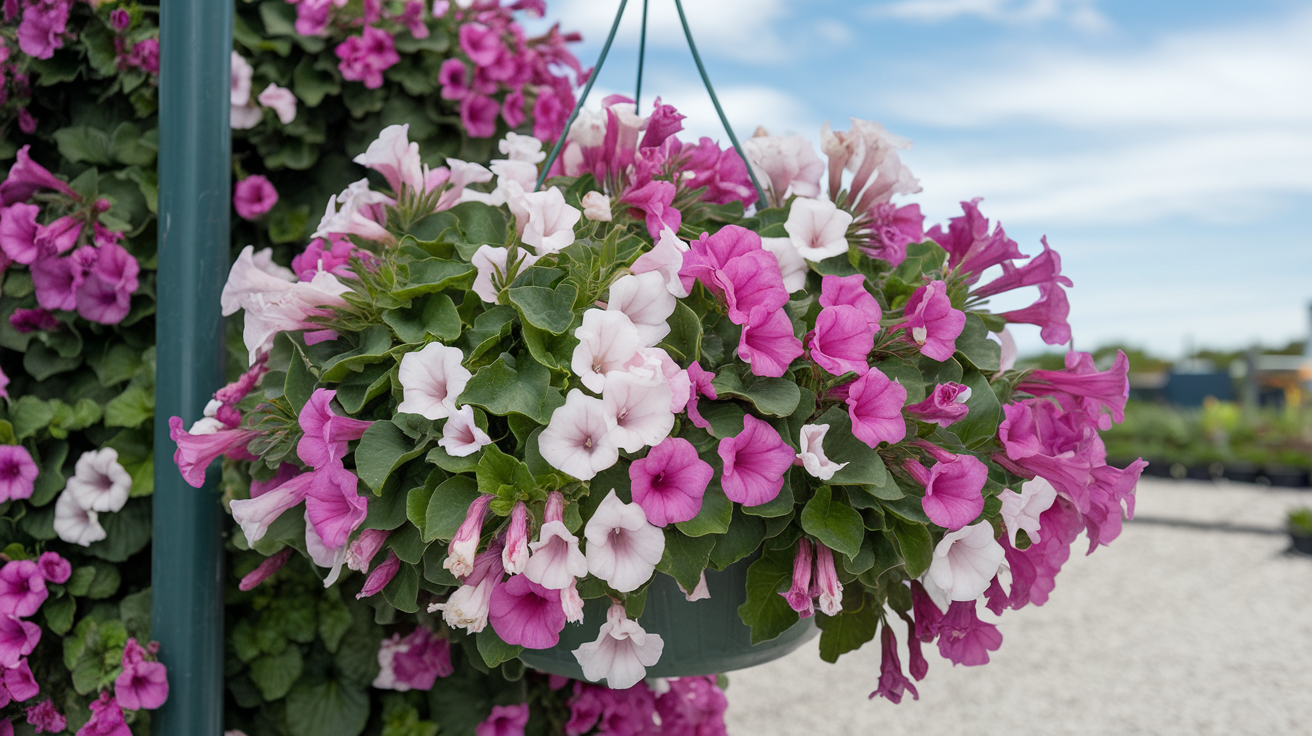
Calibrachoa, often called Million Bells, earned its nickname from the hundreds of small, bell-shaped flowers it makes all season long.
These mini-petunias come in a wide range of colors – pinks, purples, reds, yellows, and even some with patterns.
| Feature | Details |
|---|---|
| Flower Colors | Pink, purple, red, yellow, and patterned varieties |
| Blooming Season | All season long |
| Sunlight Needs | Full sun (at least 6 hours per day) |
| Watering Needs | Allow soil to dry slightly between waterings |
| Soil Preference | Well-draining soil |
| Height | 6-12 inches |
| Deadheading Needed | No, self-cleaning flowers |
| Maintenance Level | Low, easy-care plant |
24. Gerbera Daisies
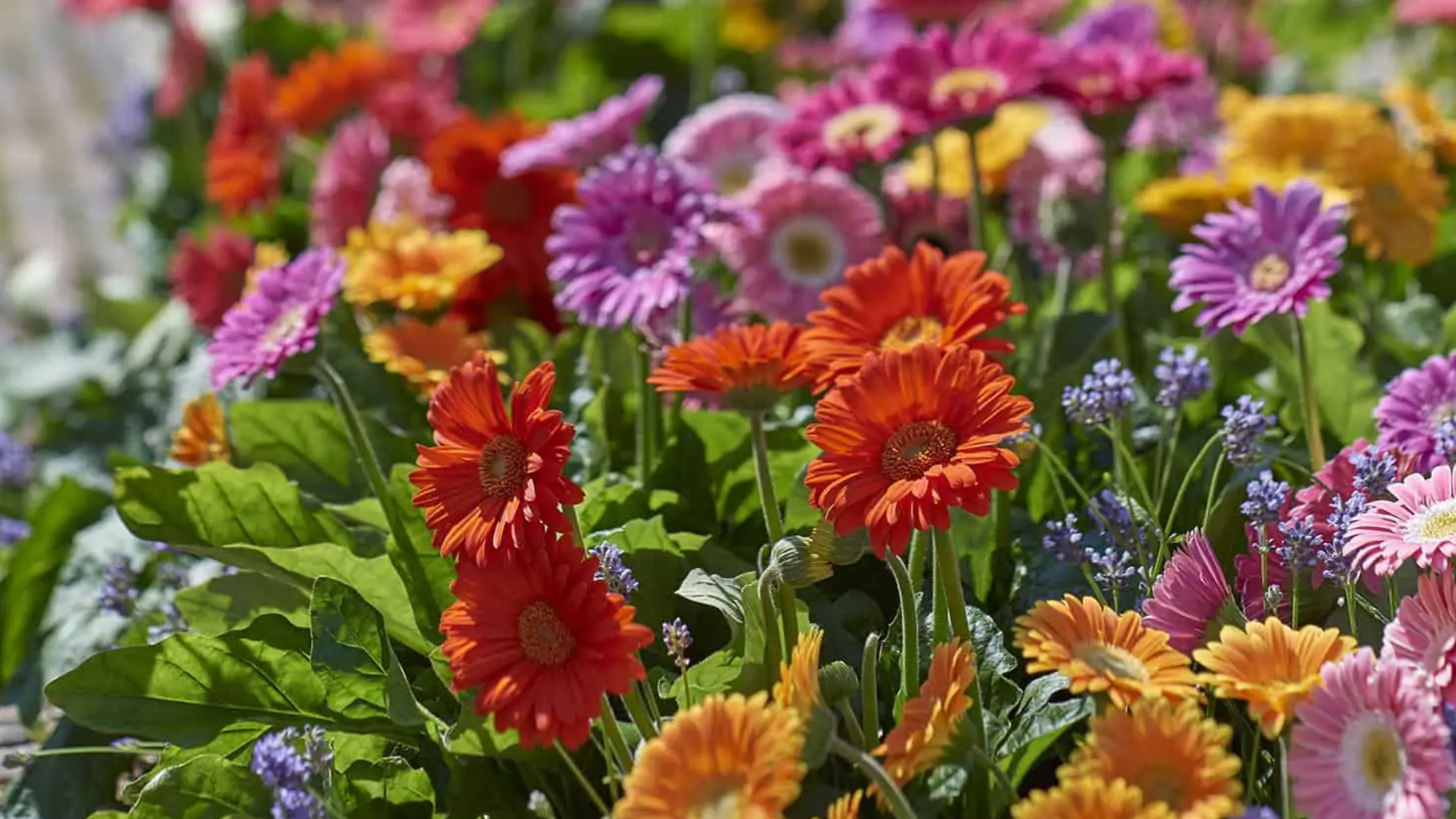
Gerbera daisies bring a smile with their big, bright flowers that look almost fake in their perfect form.
These cheery blooms appear in reds, pinks, oranges, yellows, and whites, with dark centers that stand out nicely.
| Feature | Details |
|---|---|
| Flower Colors | Red, pink, orange, yellow, white |
| Bloom Size | 3-5 inches wide |
| Blooming Season | Spring to fall (long-lasting blooms) |
| Sunlight Needs | Full sun, with afternoon shade in hot climates |
| Watering Needs | Water soil directly; avoid wetting leaves |
| Soil Preference | Well-draining soil, slightly acidic to neutral |
| Planting Depth | A crown should sit slightly above the soil to prevent rot |
| Ideal Planting Locations | Containers, garden beds |
| Cut Flower Use | Excellent for vases, long-lasting blooms |
| Maintenance Level | Moderate (needs well-drained soil and proper watering) |
25. Fuchsias
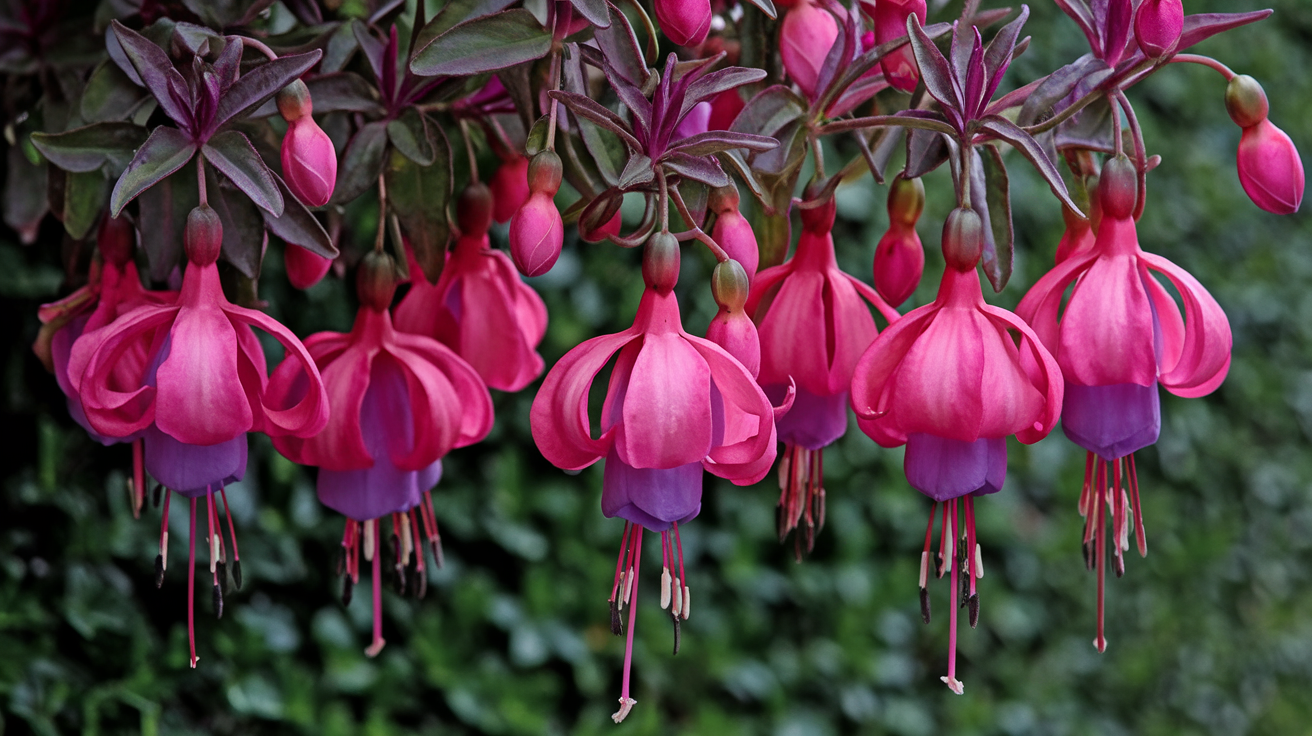
Fuchsias catch the eye with their hanging, two-tone blooms that look like tiny dancers in tutus.
These pretty plants make flowers in mixes of pink, purple, red, and white, often with the inner petals a different color than the outer ones.
| Feature | Details |
|---|---|
| Flower Colors | Pink, purple, red, and white (often bi-colored) |
| Blooming Season | Spring to fall |
| Sunlight Needs | Morning sun, afternoon shade; prefers light shade in hot climates |
| Watering Needs | Regular watering; does not tolerate dry soil |
| Soil Preference | Well-draining, moist soil |
| Height | 1-3 feet |
| Spread | 1-3 feet |
| Weather Preference | Cooler temperatures does well in light-shade |
| Maintenance Level | Moderate (needs consistent watering and partial shade) |
26. Snapdragons
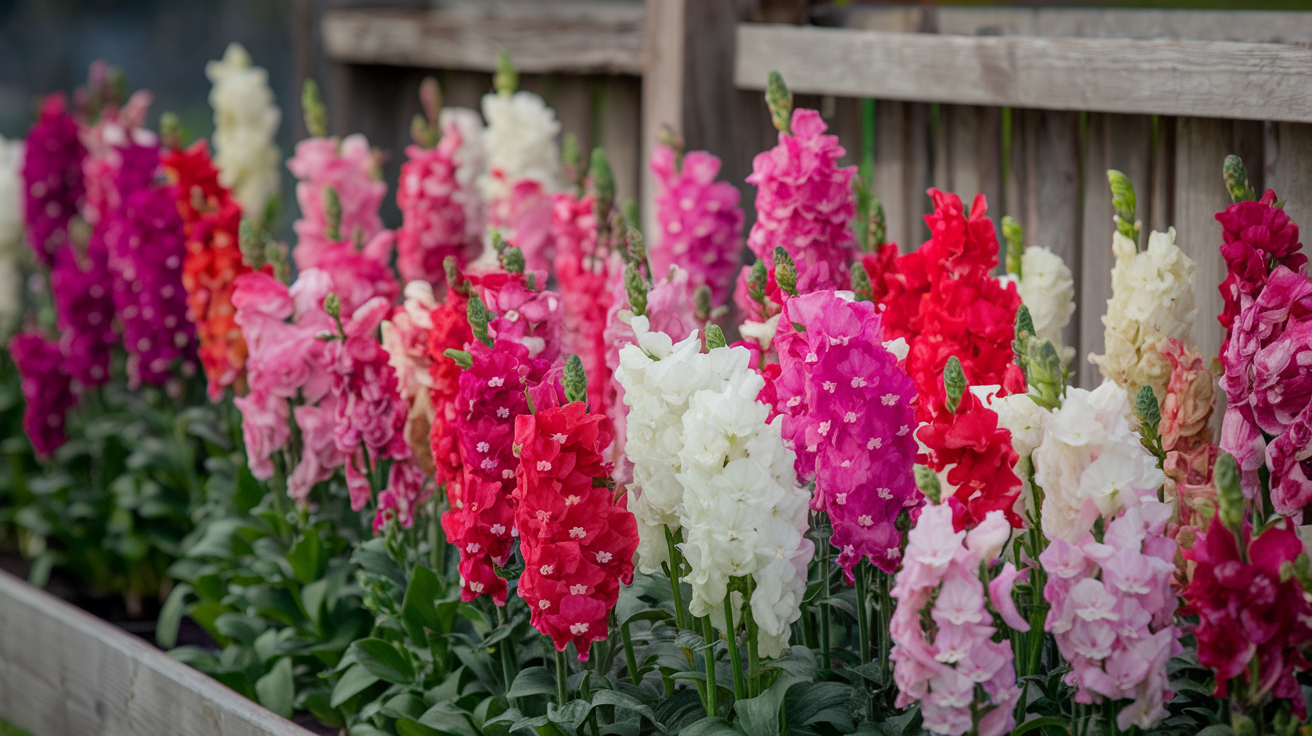
Snapdragons bring fun and charm to any garden with their unique flower shape. Kids and adults alike enjoy gently squeezing the sides to make the “dragon’s mouth” open and close.
These flowers come in almost every color except true blue – from bright yellows and reds to soft pinks and whites.
| Feature | Details |
|---|---|
| Flower Colors | Nearly every color except true blue (yellow, red, pink, white, etc.) |
| Blooming Season | Heaviest in spring and fall (prefers cooler temperatures) |
| Sunlight Needs | Full sun |
| Watering Needs | Moderate; prefers well-drained soil |
| Soil Preference | Well-draining, fertile soil |
| Height | Dwarf: 6-8 inches; Tall: Up to 3 feet |
| Support Needs | Taller varieties may need staking for support |
| Deadheading | Removing spent blooms encourages more flowers |
| Self-Seeding | Often self-seeds, producing volunteer plants the next year |
| Maintenance Level | Moderate (requires occasional deadheading and support for tall varieties) |
27. Sweet Peas
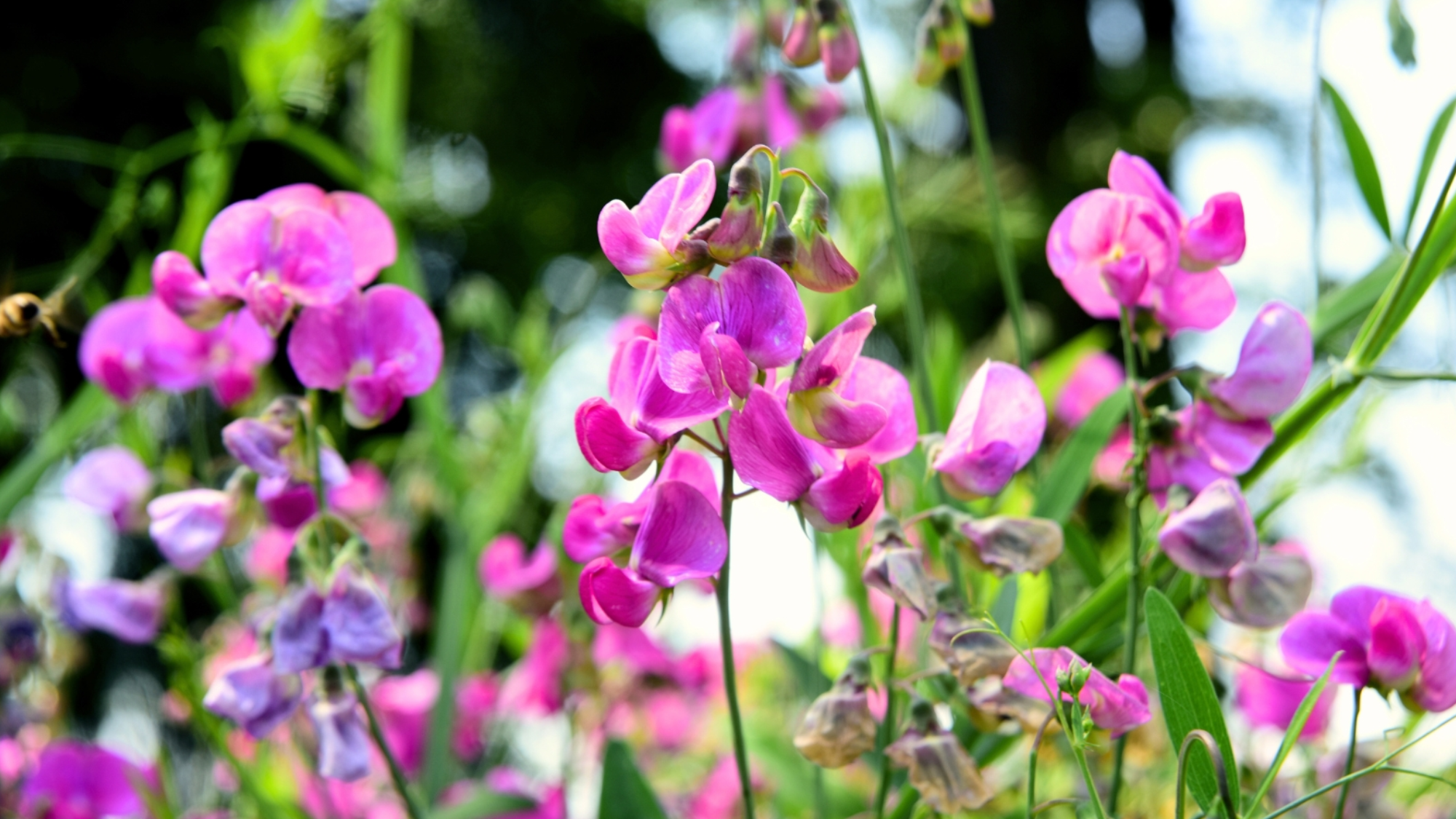
Sweet peas produce one of the most wonderful scents in the flower world. Their fragrant blooms come in soft pastels and bright colors alike – lavenders, pinks, blues, reds, and whites.
The ruffled petals add a touch of old-fashioned beauty to gardens and bouquets.
| Feature | Details |
|---|---|
| Fragrance | Highly fragrant, one of the best-scented flowers |
| Flower Colors | Lavender, pink, blue, red, white, and pastel shades |
| Blooming Season | Spring to early summer (best in cool weather) |
| Sunlight Needs | Full morning sun, some afternoon shade |
| Watering Needs | Regular watering prefers moist but well-drained soil |
| Soil Preference | A rich, well-draining soil |
| Height | 6-8 feet (with support) |
| Ideal Planting Locations | Trellises, fences, arbors, containers with support |
| Seed Preparation | Soak seeds overnight before planting for faster germination |
| Cut Flower Use | Frequent cutting encourages more blooms |
| Maintenance Level | Moderate (requires support and regular watering) |
28. Hibiscus
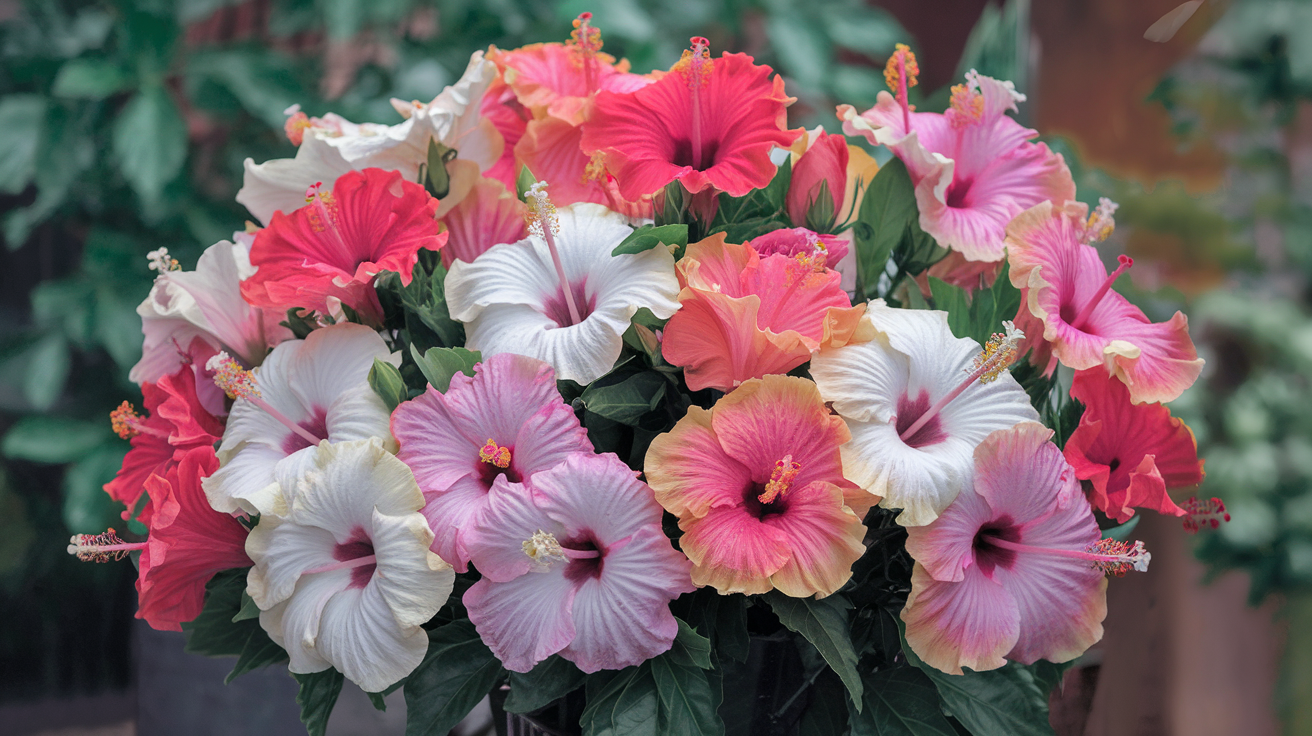
Hibiscus flowers create a tropical feel with their large, showy blooms.
These eye-catching flowers span 4-8 inches across and display vibrant colors – reds, pinks, oranges, yellows, whites, and even blues and purples.
| Feature | Details |
|---|---|
| Flower Size | 4-8 inches across |
| Flower Colors | Red, pink, orange, yellow, white, blue, purple (often with a contrasting central eye) |
| Blooming Season | Summer to fall |
| Sunlight Needs | Full sun |
| Watering Needs | Regular watering, prefers moist but well-drained soil |
| Soil Preference | Well-draining, fertile soil |
| Types | Tropical Hibiscus (needs warm temperatures year-round) and Hardy Hibiscus (dies back in winter but regrows in spring) |
| Lifespan of Each Flower | 1-2 days, but blooms continuously in succession |
| Wildlife Attraction | Attracts butterflies and hummingbirds |
| Maintenance Level | Moderate (requires regular watering and full sun) |
29. Bleeding Hearts
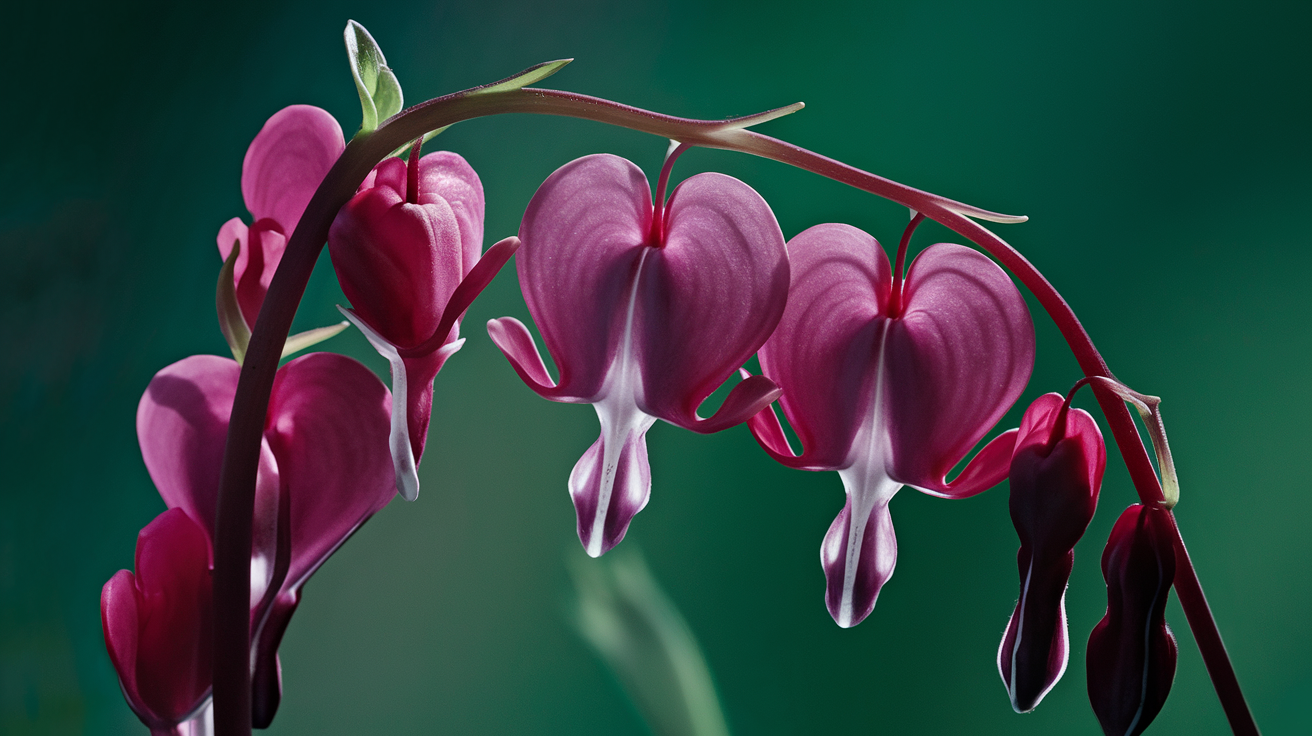
Bleeding hearts capture attention with their uniquely shaped flowers that resemble tiny hearts with a droplet beneath.
These charming plants produce arching stems lined with pink or white heart-shaped blooms in spring. The blue-green, fern-like foliage adds beauty even when not flowering.
| Feature | Details |
|---|---|
| Flower Colors | Pink, white |
| Blooming Season | Spring |
| Sunlight Needs | Partial to full shade |
| Watering Needs | Consistent moisture; does not tolerate dry soil well |
| Soil Preference | Rich, well-draining soil with organic matter |
| Height | 1-3 feet |
| Spread | 1-3 feet |
| Ideal Planting Locations | Shaded garden beds, woodland gardens, borders |
| Maintenance Level | Low to moderate (needs moisture and shade, but otherwise easy to grow) |
30. Orchids (for indoor growing)
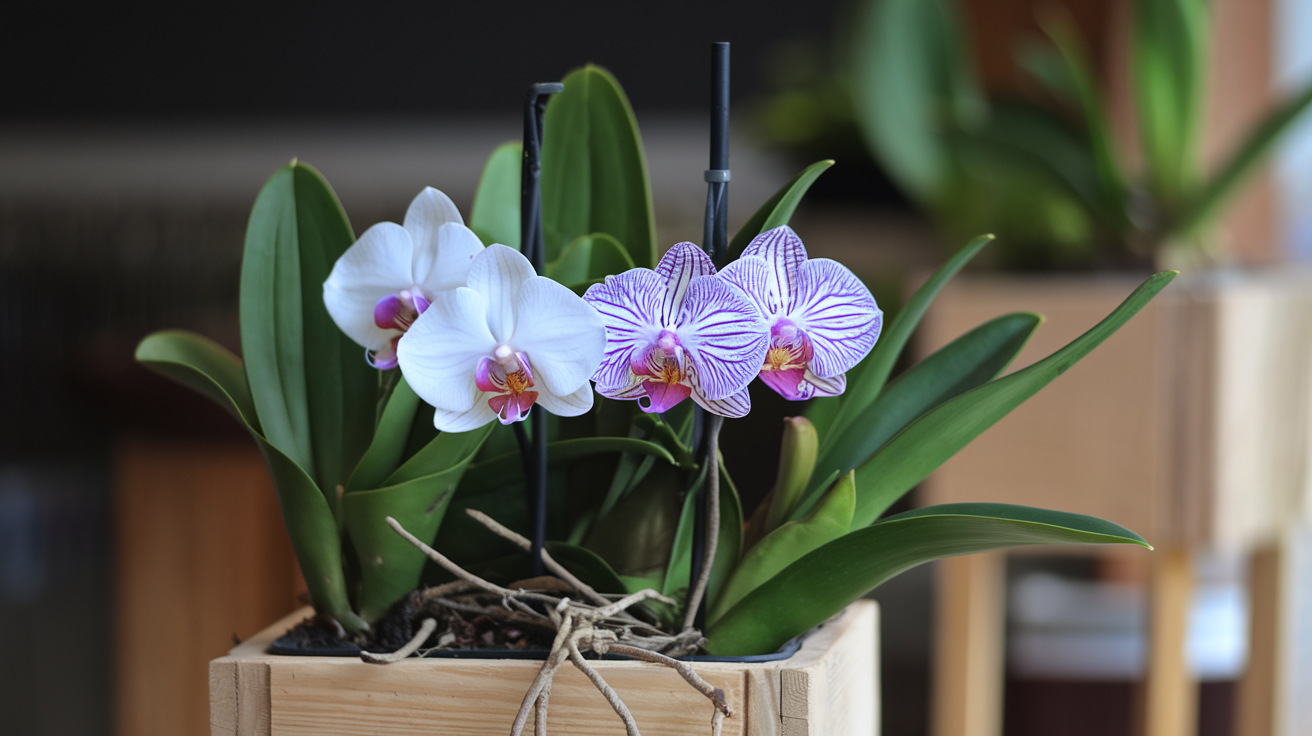
Orchids bring exotic beauty indoors with their long-lasting, beautiful blooms.
Phalaenopsis (moth orchids) offer the easiest start for beginners. Their flowers last for months and come in whites, pinks, purples, yellows, and patterns with spots or stripes.
| Feature | Details |
|---|---|
| Flower Colors | White, pink, purple, yellow, and patterned varieties (spots or stripes) |
| Blooming Season | Once or twice a year |
| Bloom Duration | 1-3 months |
| Sunlight Needs | Bright, indirect light (east or north-facing window) |
| Watering Needs | Water thoroughly when the potting mix is dry (about once a week) |
| Soil Preference | Special orchid potting mix (bark-based, airy) |
| Humidity Needs | Prefers extra humidity |
| Temperature Preference | Room temperature (warm, stable conditions) |
| Reblooming Care | Cut flower stems just above a node after blooms fade to encourage reblooming |
| Maintenance Level | Moderate (requires proper watering, humidity, and light balance) |
31. African Violets
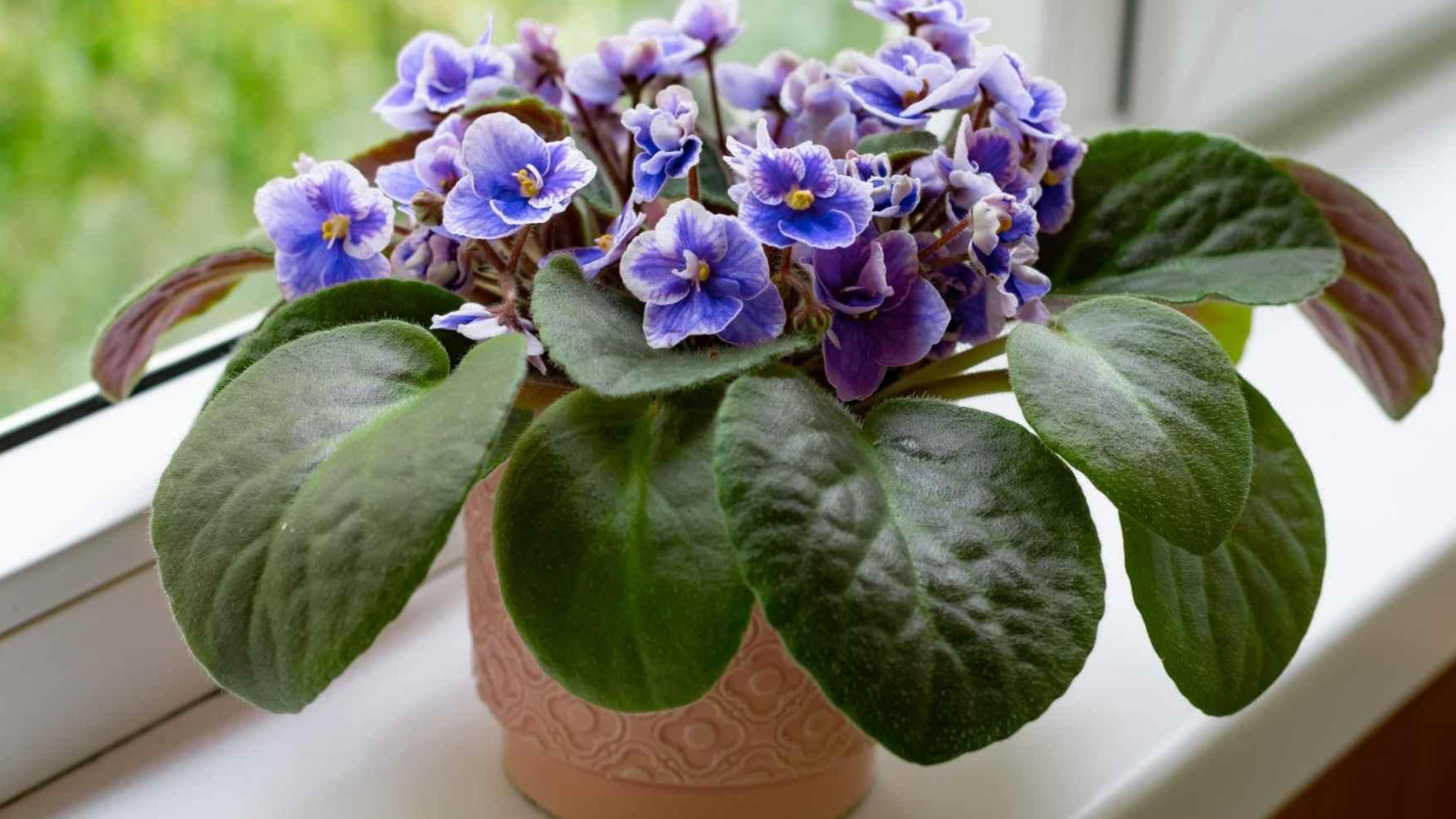
African violets offer year-round blooms in small packages. These compact houseplants display velvety flowers in purples, blues, pinks, whites, and bicolor.
The fuzzy, rounded leaves form a neat rosette that stays attractive even between flowering cycles.
| Feature | Details |
|---|---|
| Flower Colors | Purple, blue, pink, white, bicolor |
| Blooming Season | Year-round with proper care |
| Sunlight Needs | Bright, indirect light (avoid direct sun) |
| Watering Needs | Water from below to keep leaves dry |
| Soil Preference | Well-draining, lightweight potting mix |
| Humidity Needs | Prefers slightly humid air |
| Temperature Preference | Room temperature (65-75°F) |
| Size | 6-8 inches across |
| Ideal Growing Locations | Windowsills, small tables, indoor spaces |
| Maintenance Level | Low (easy to care for with basic watering and light needs) |
Conclusion
Growing beautiful flowers doesn’t need to be hard work. The plants shared here prove that anyone can enjoy colorful blooms with just basic care.
From snapdragons that make children smile to sweet peas that fill your garden with scent, these flowers bring joy without putting much effort.
Start small with just a few types that match your space and sunlight. Soon, you’ll find which ones do best in your yard.
Remember that even easy flowers need some attention – regular water and the right spot make all the difference.
Ready to get your hands in the soil? Visit your local garden center to find these plants or order seeds online.
Comment below which one became your favorite flower!

